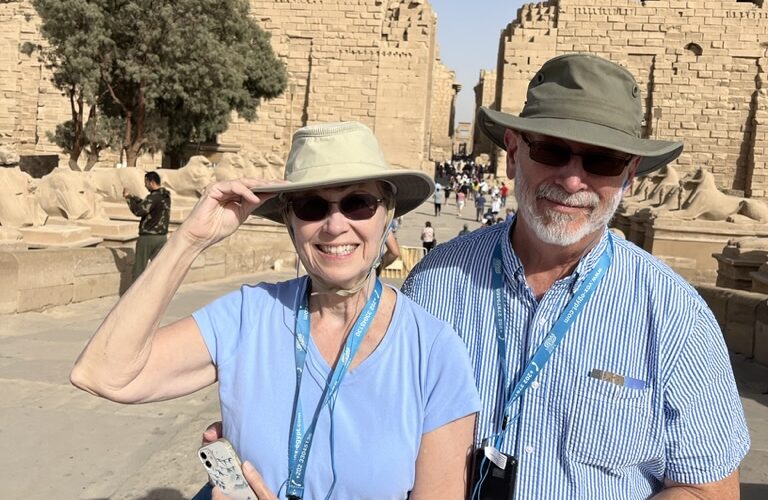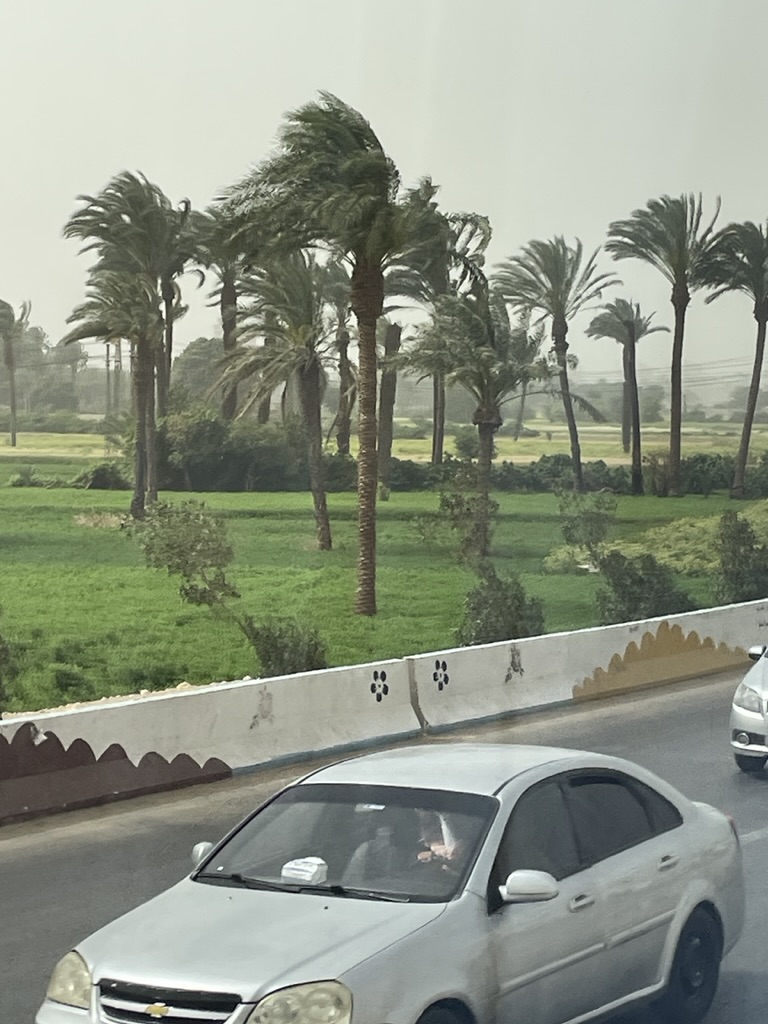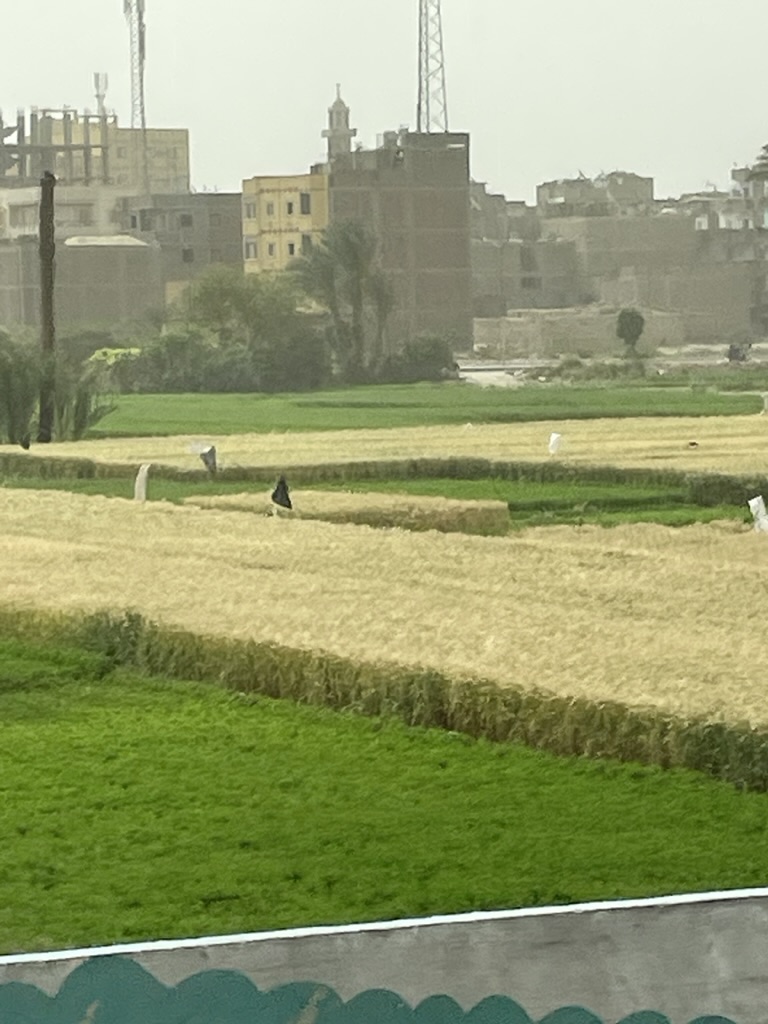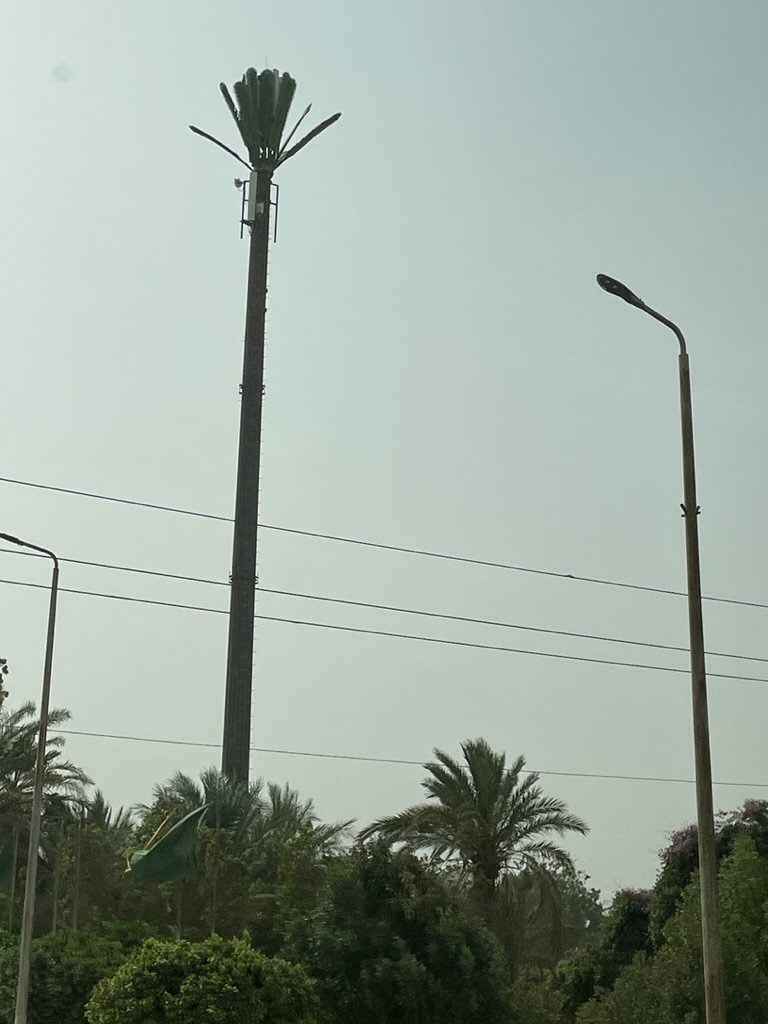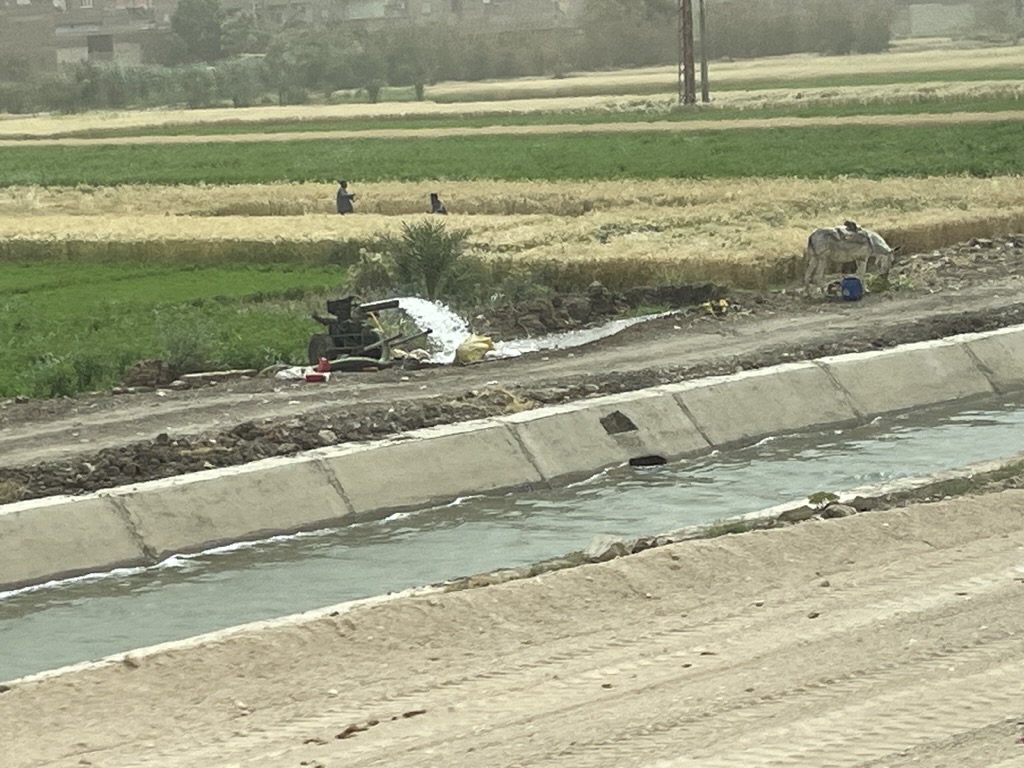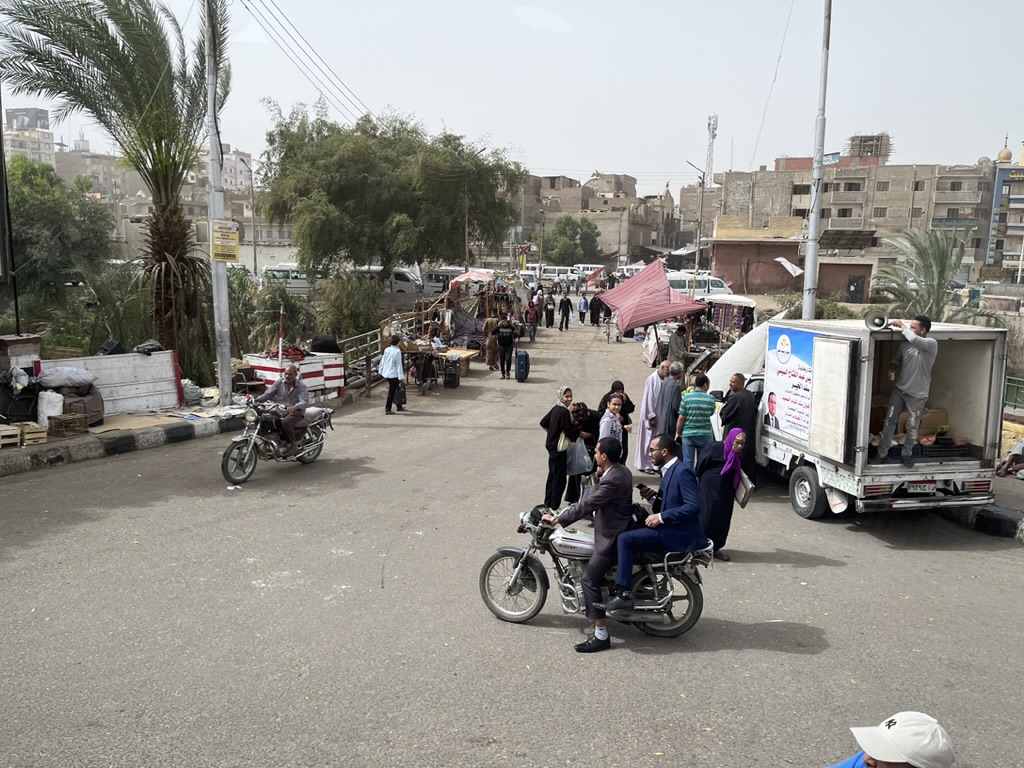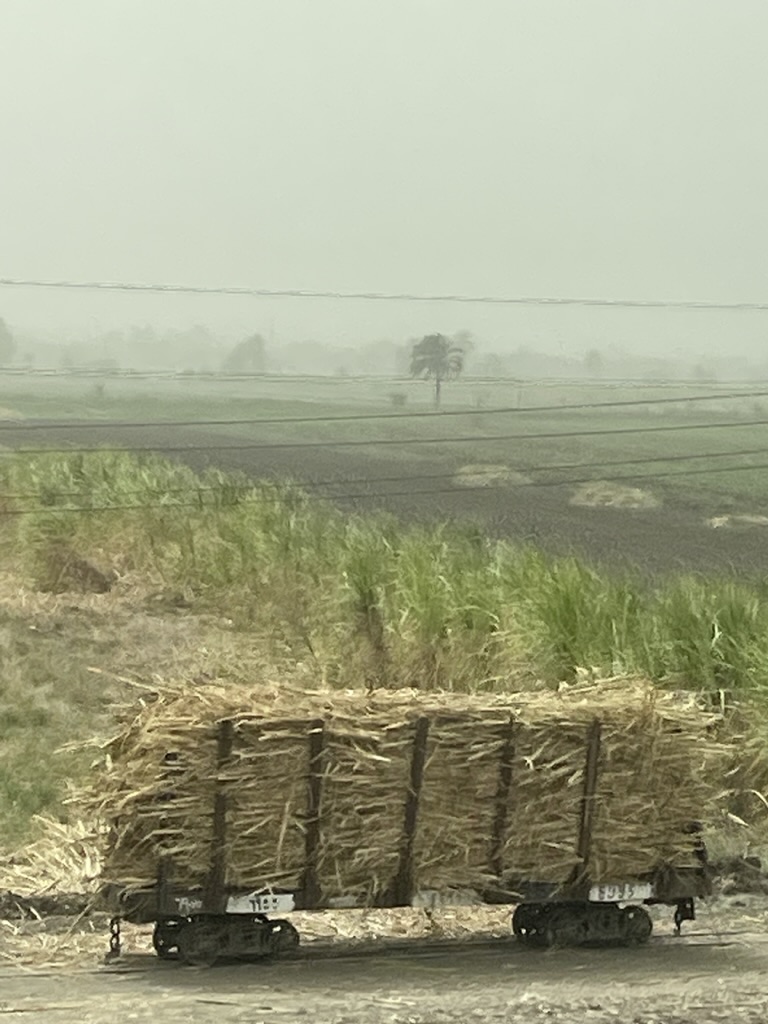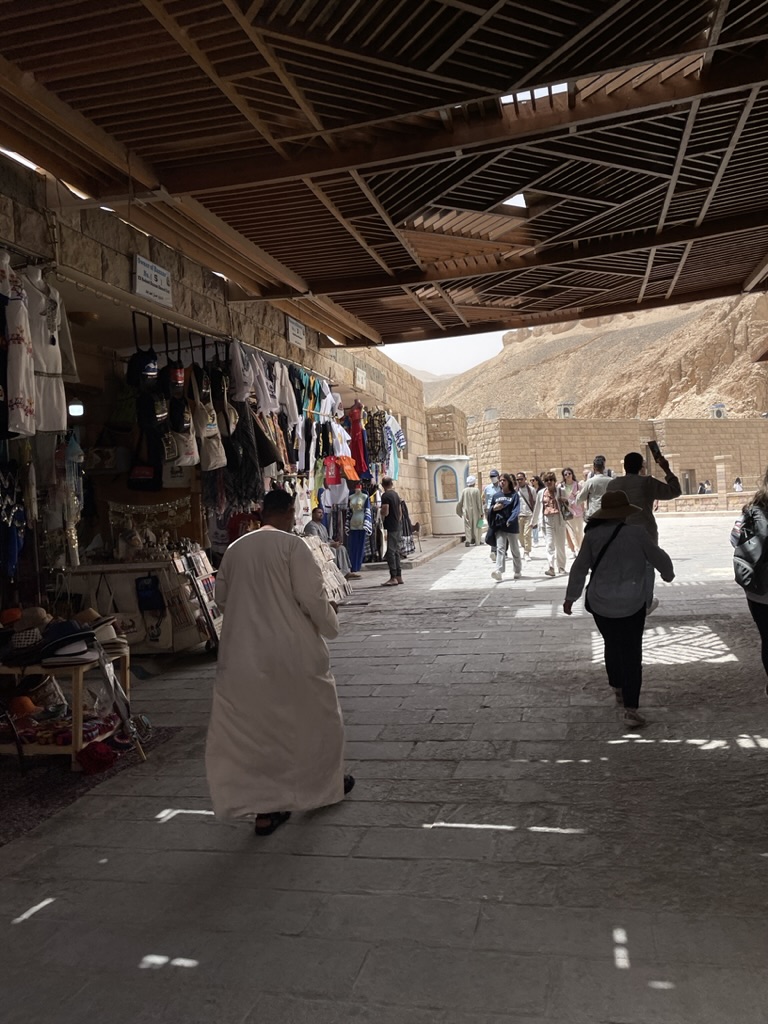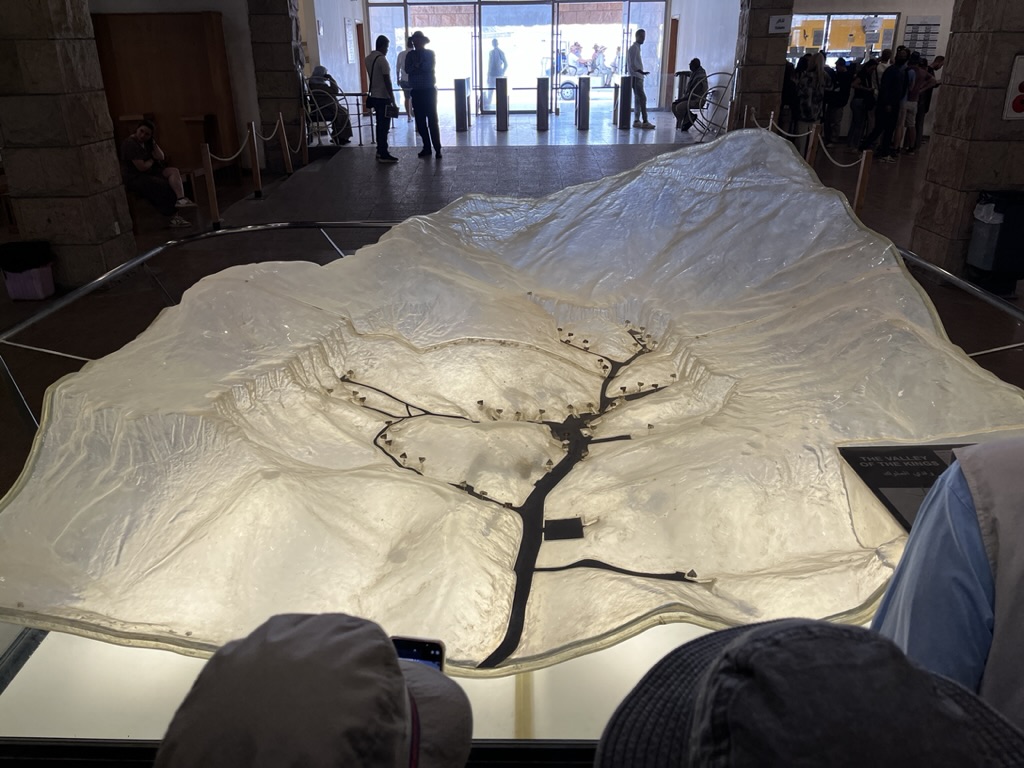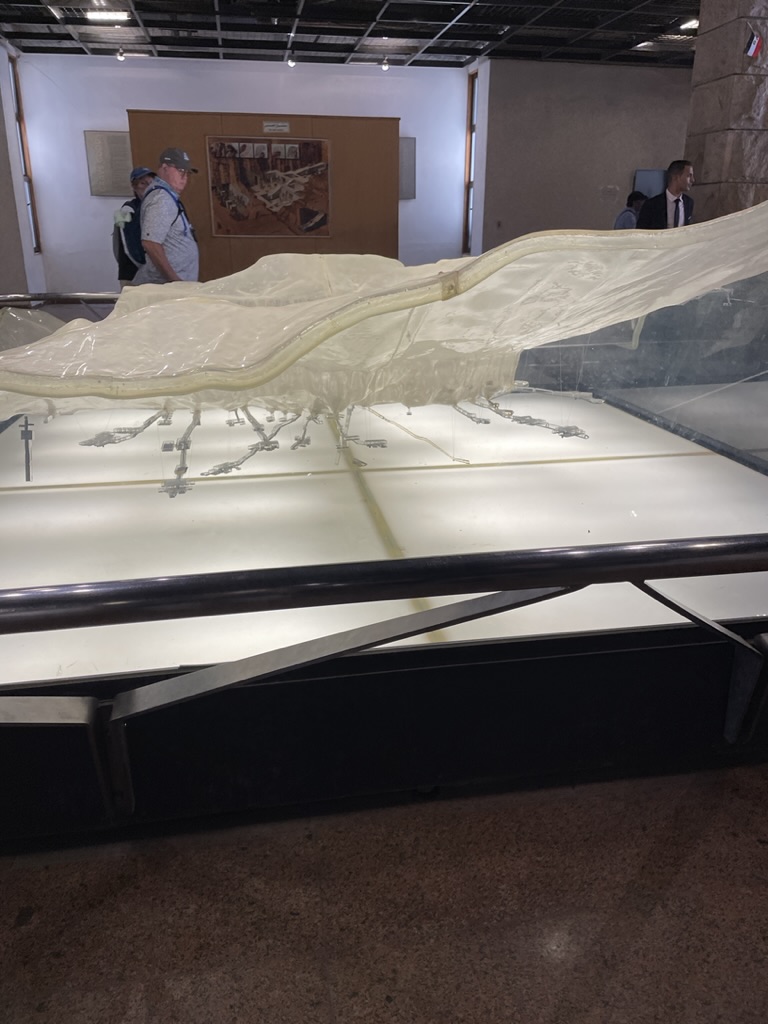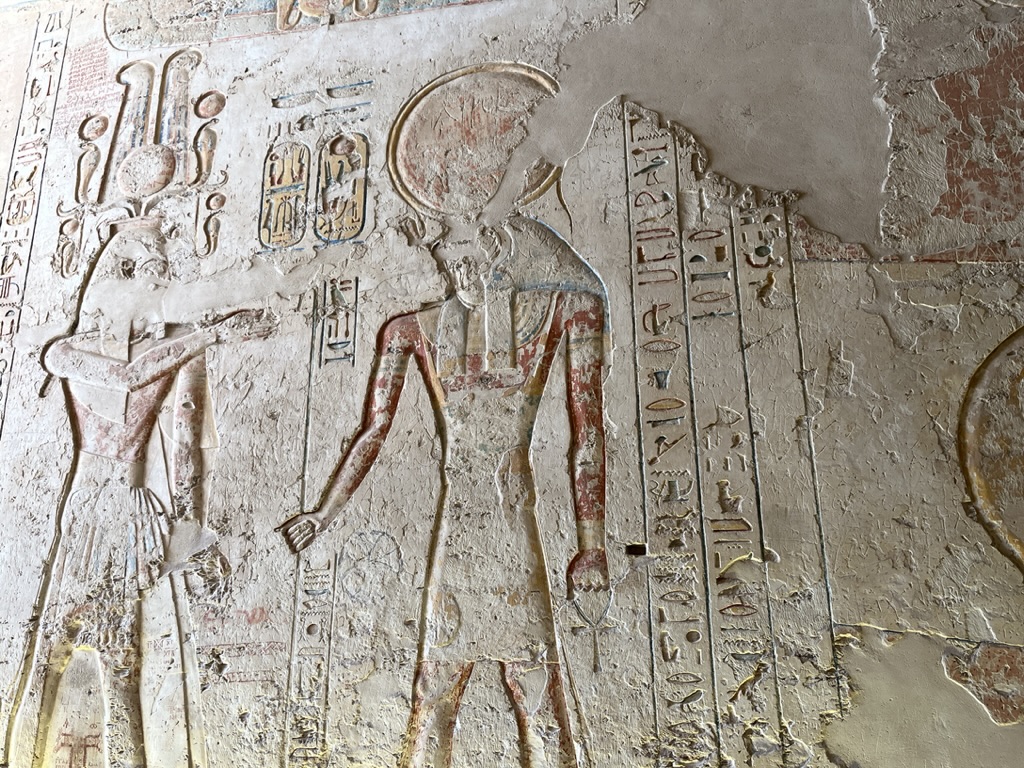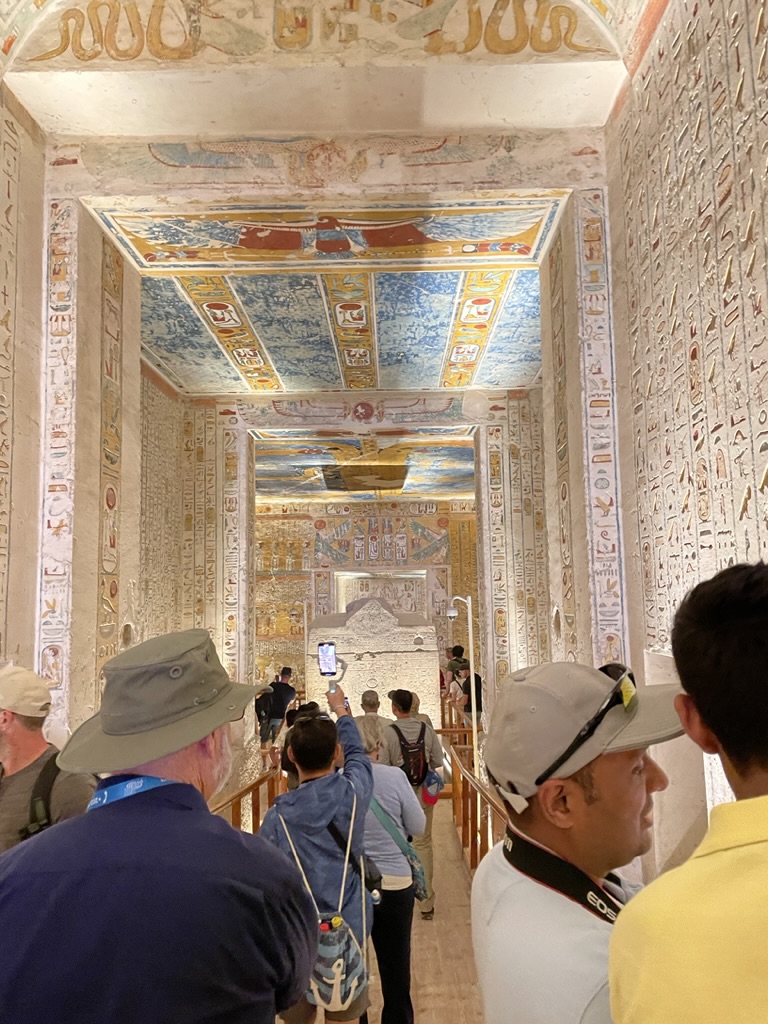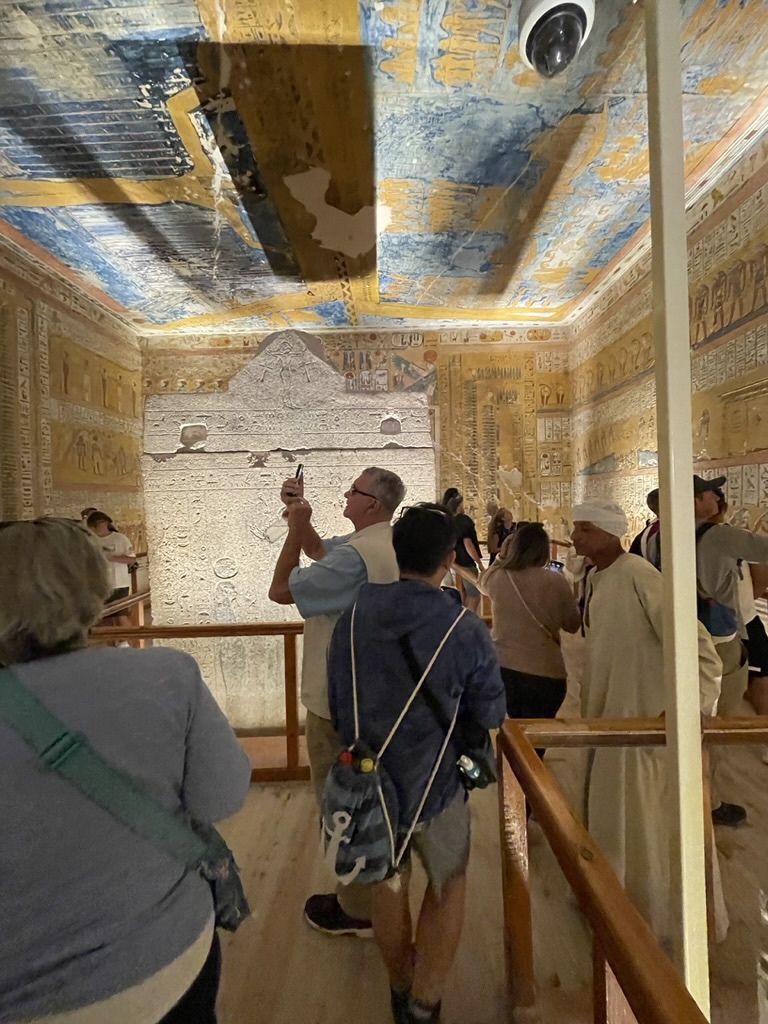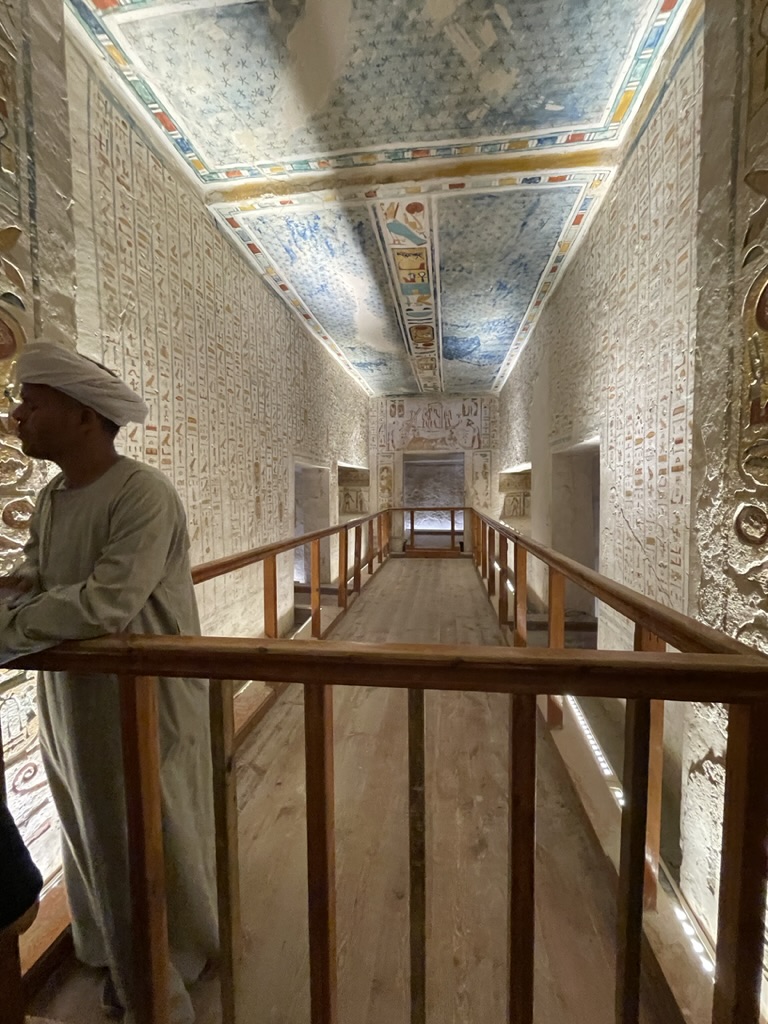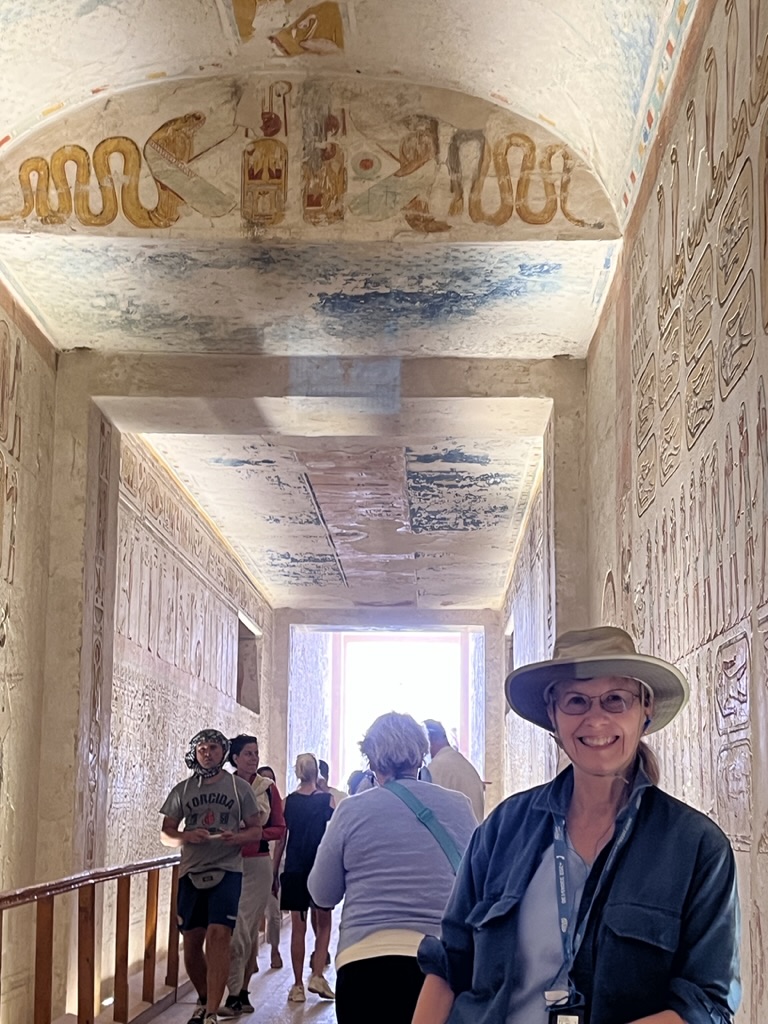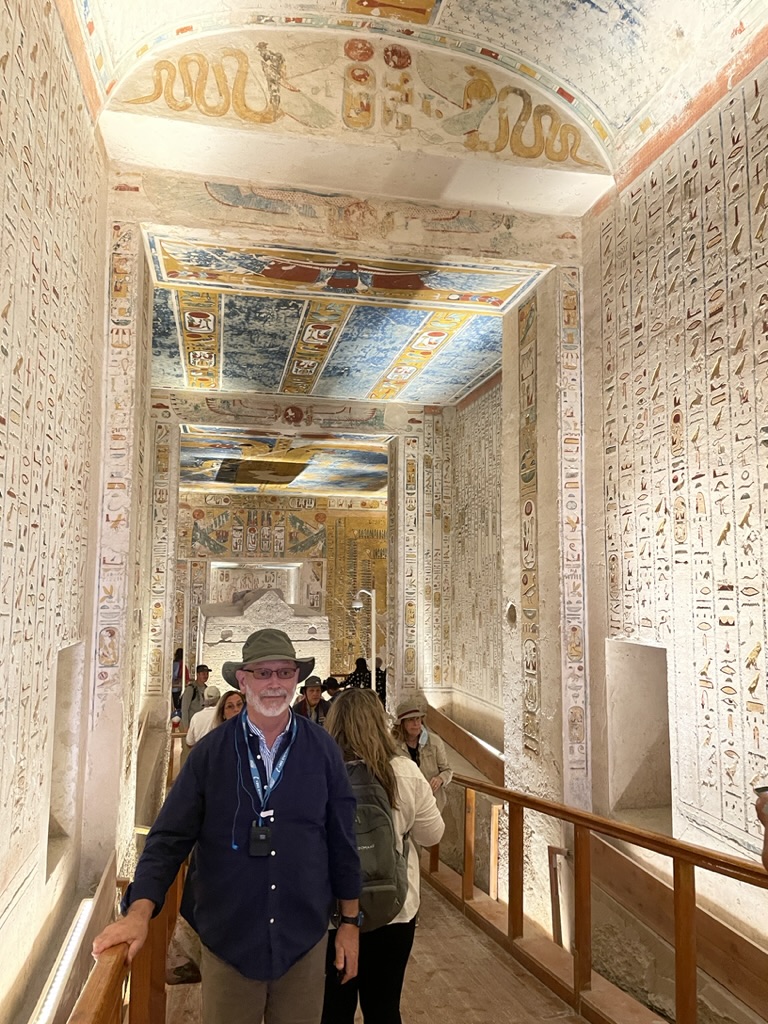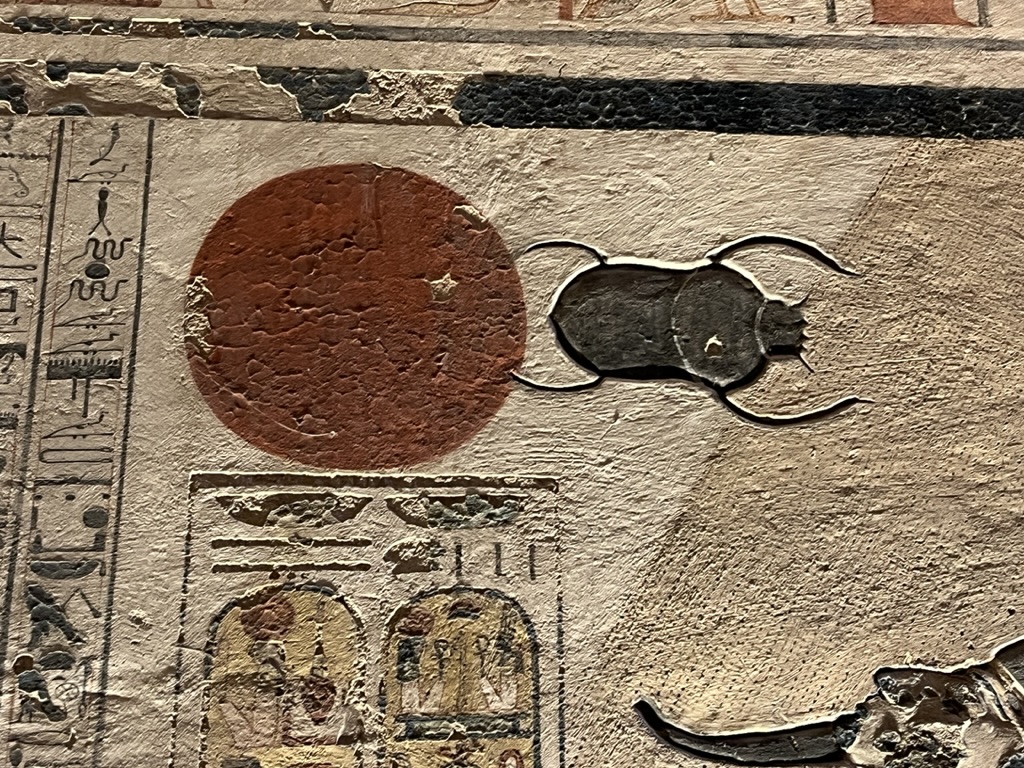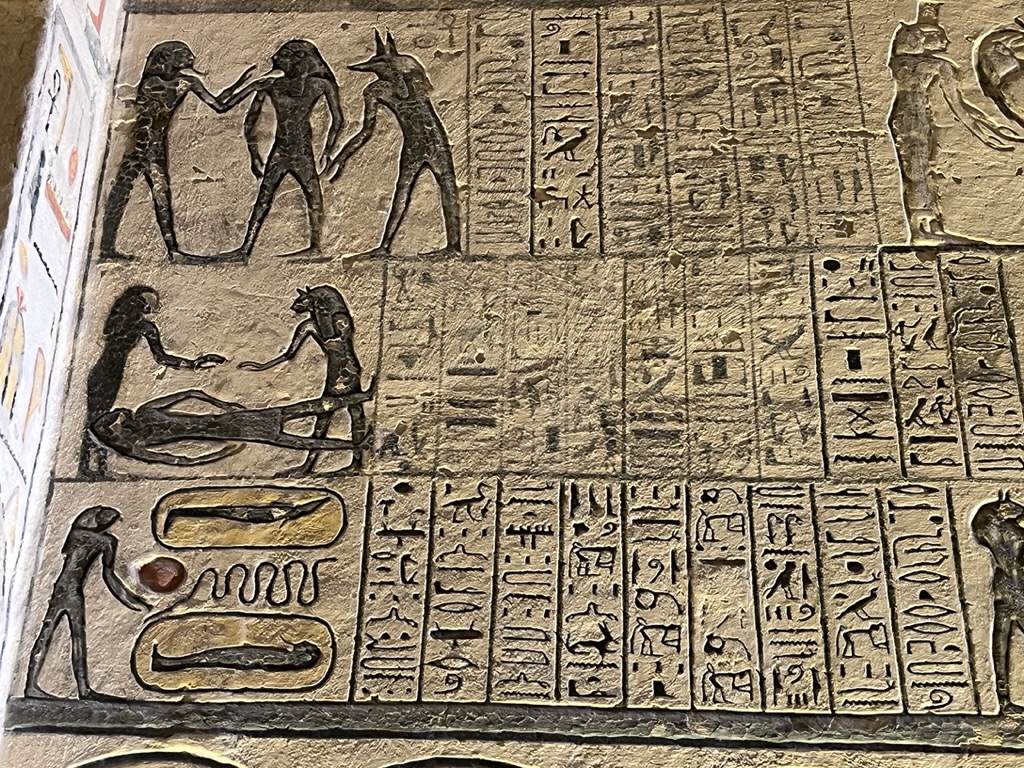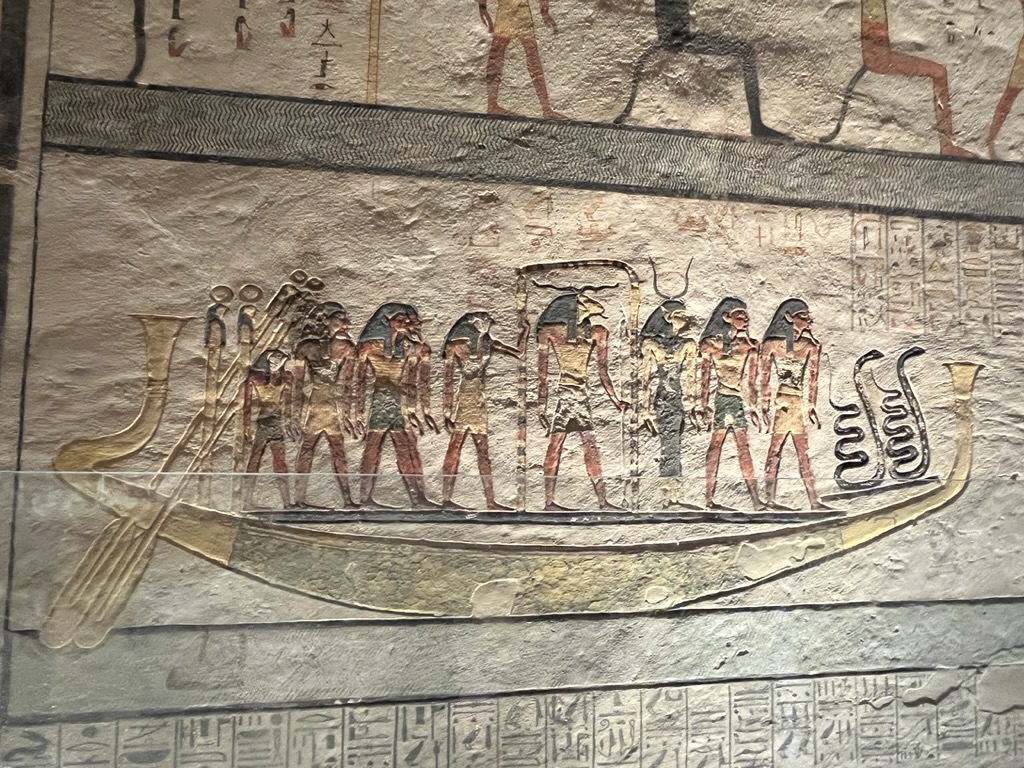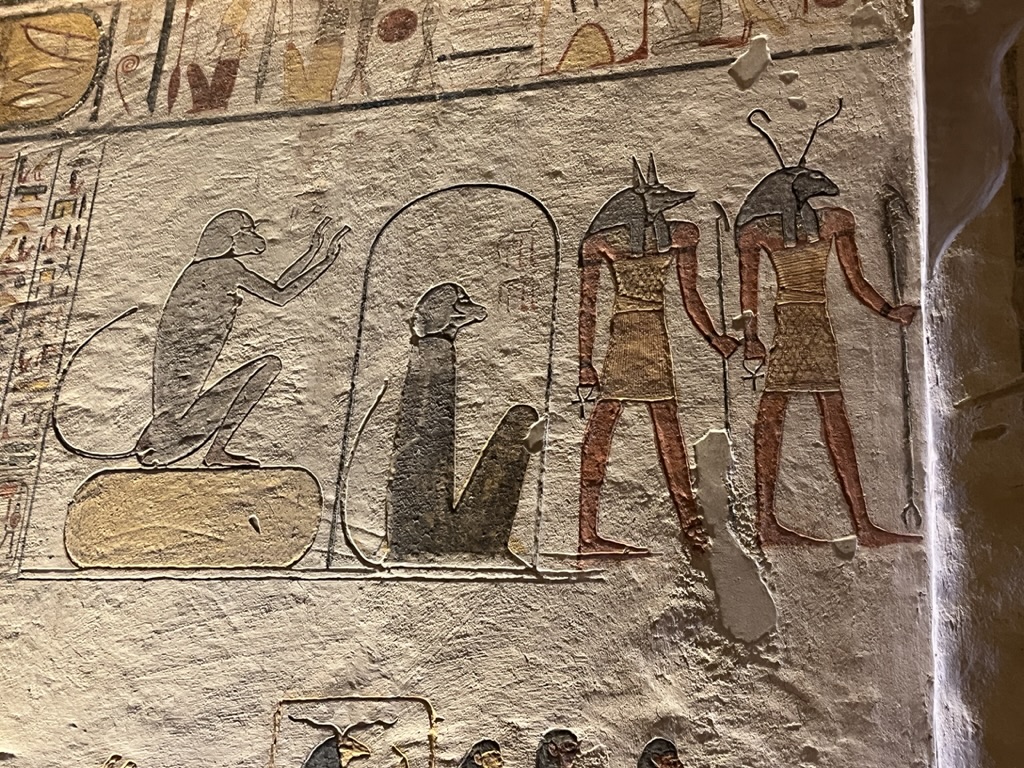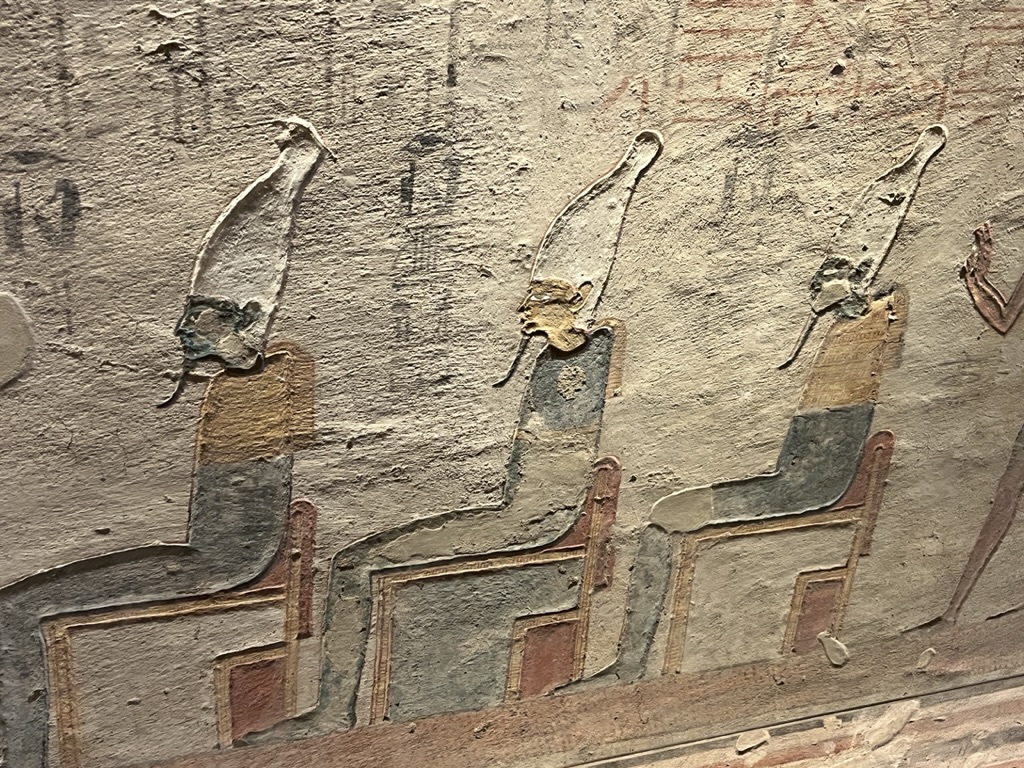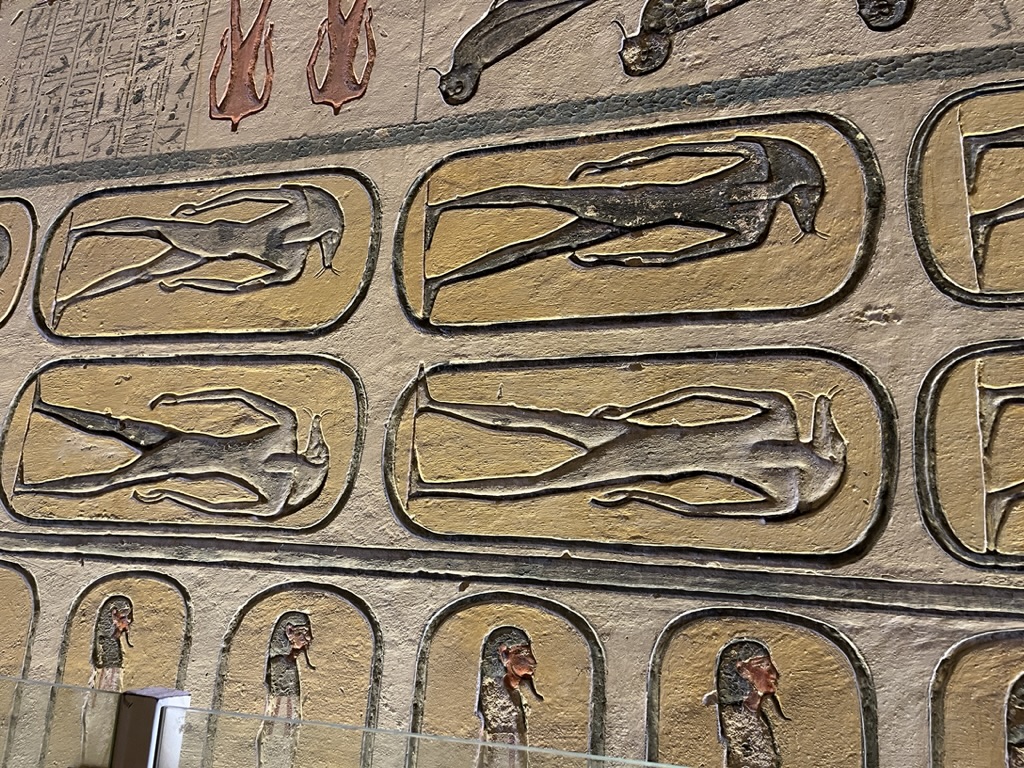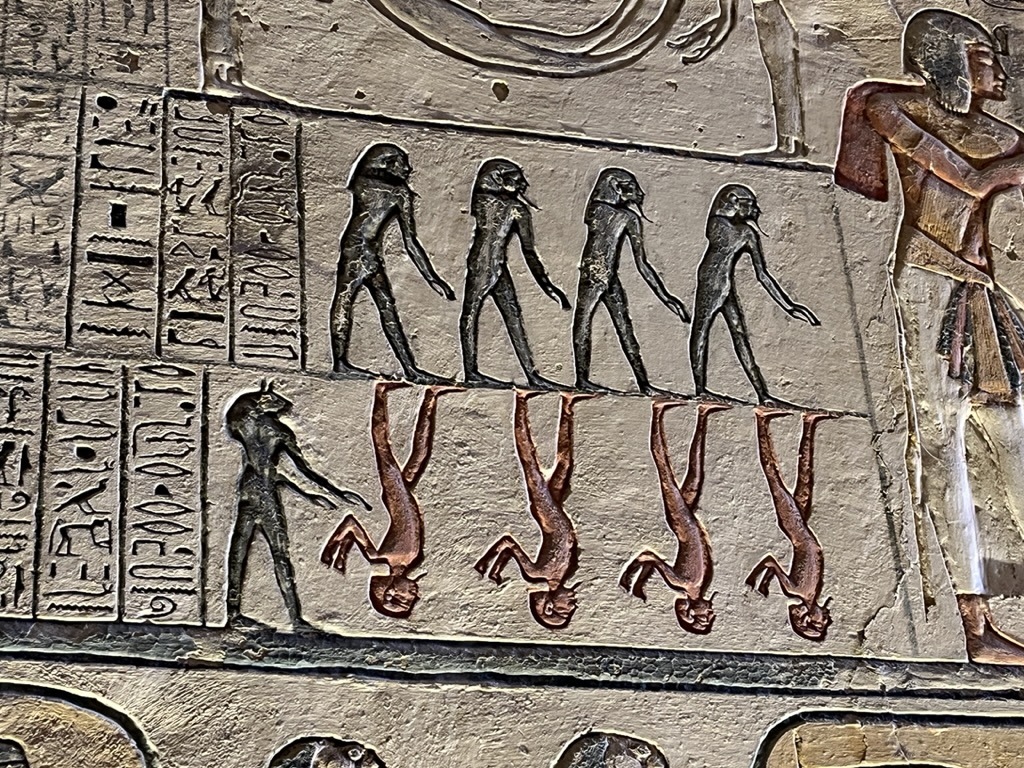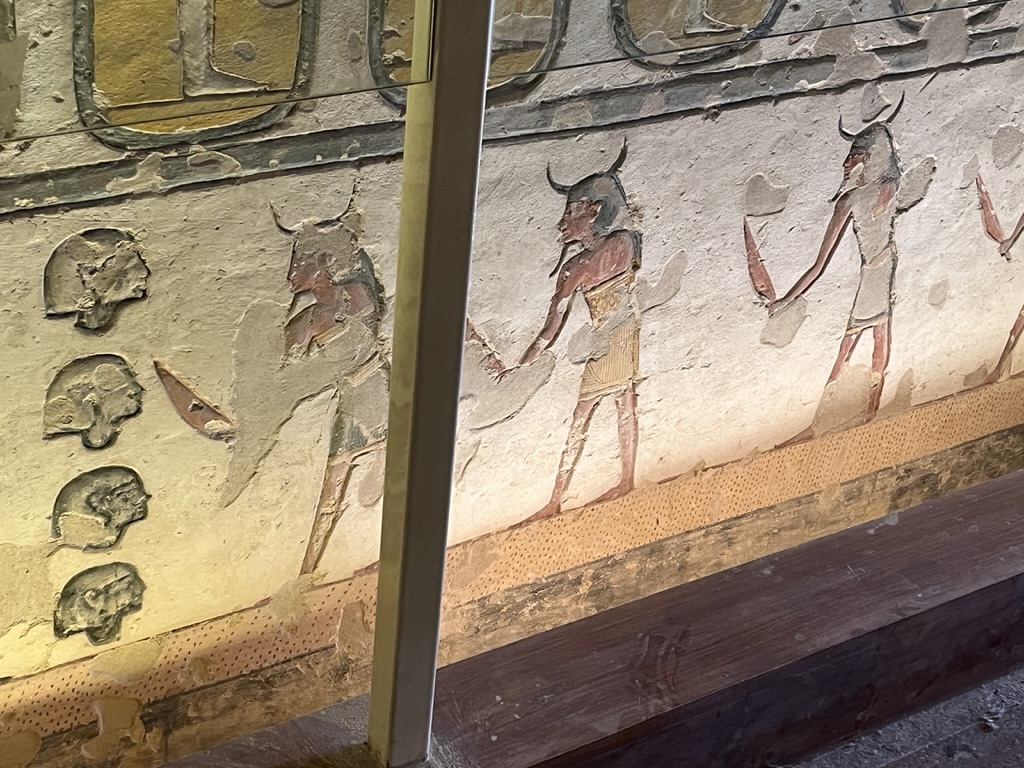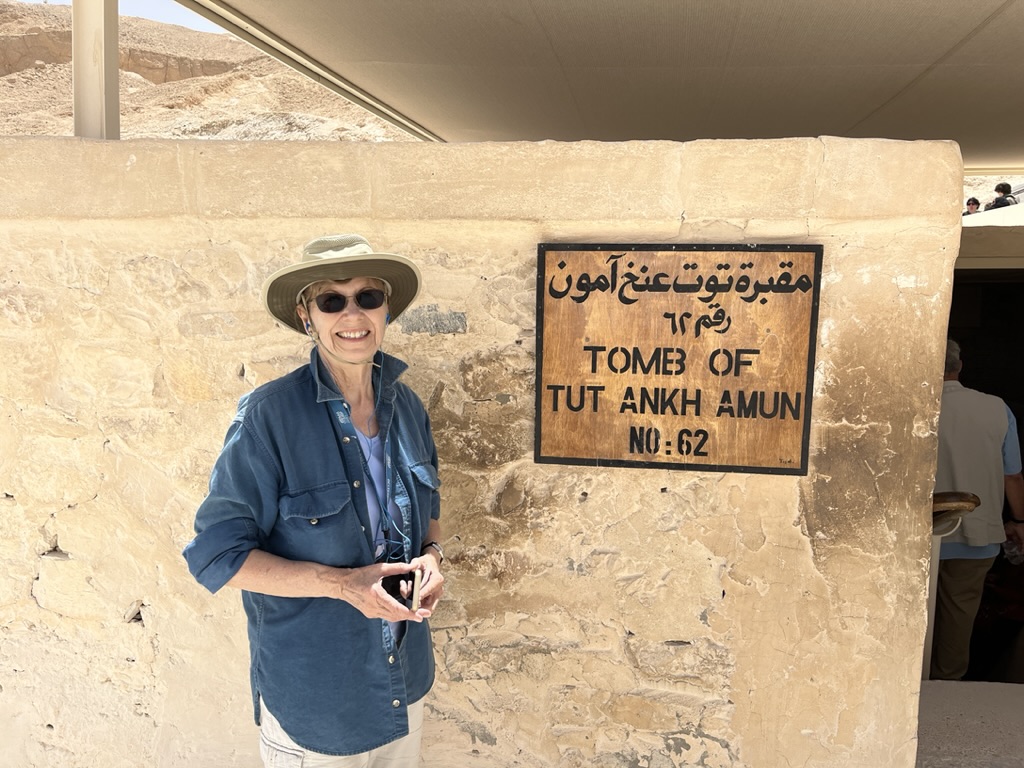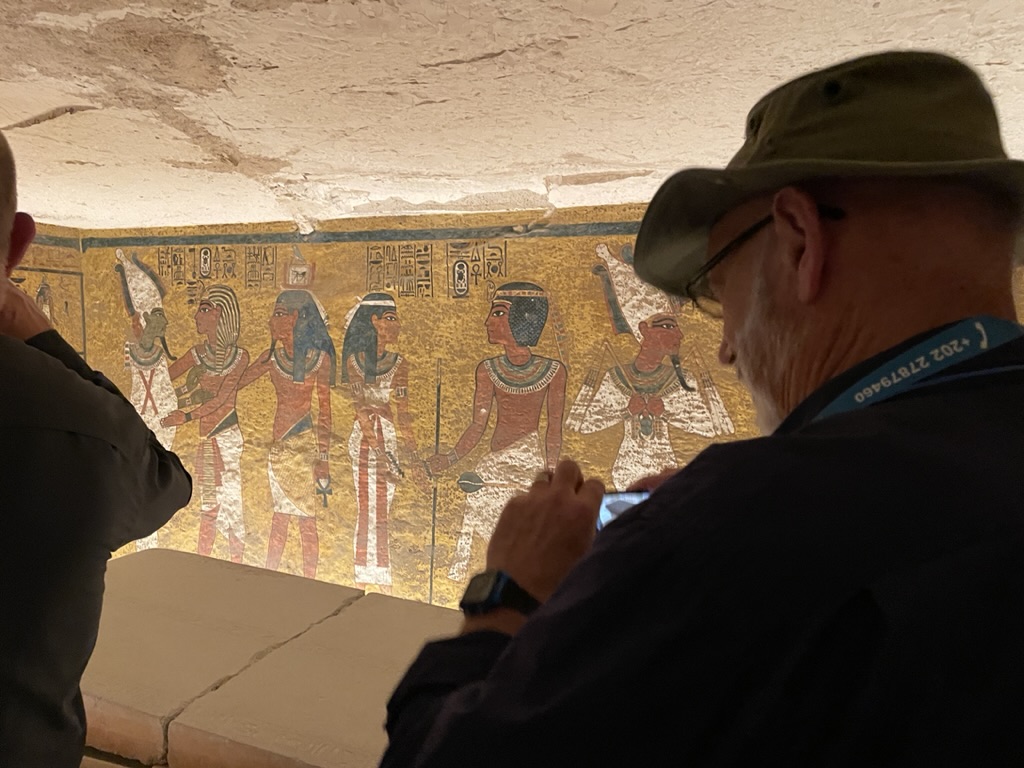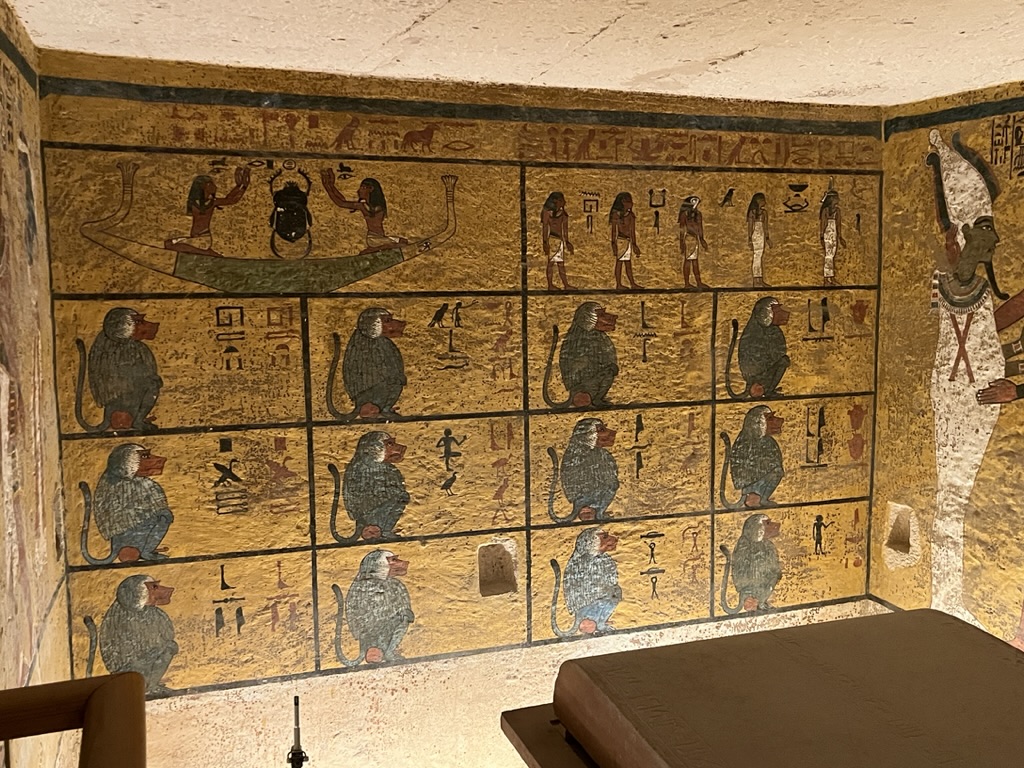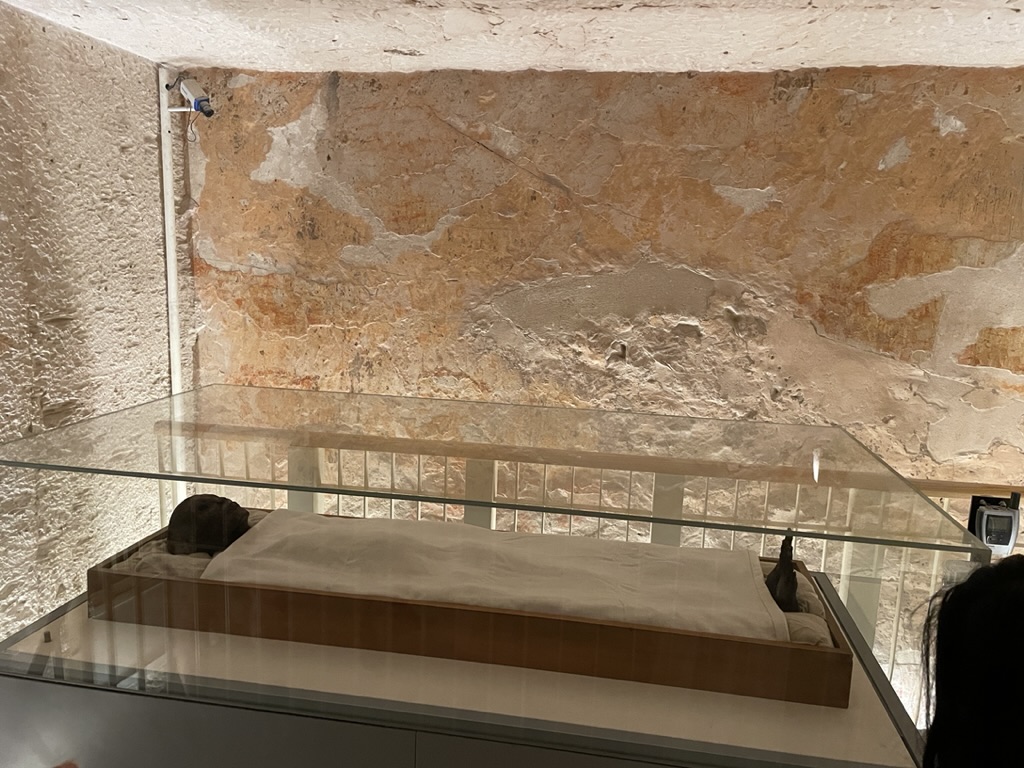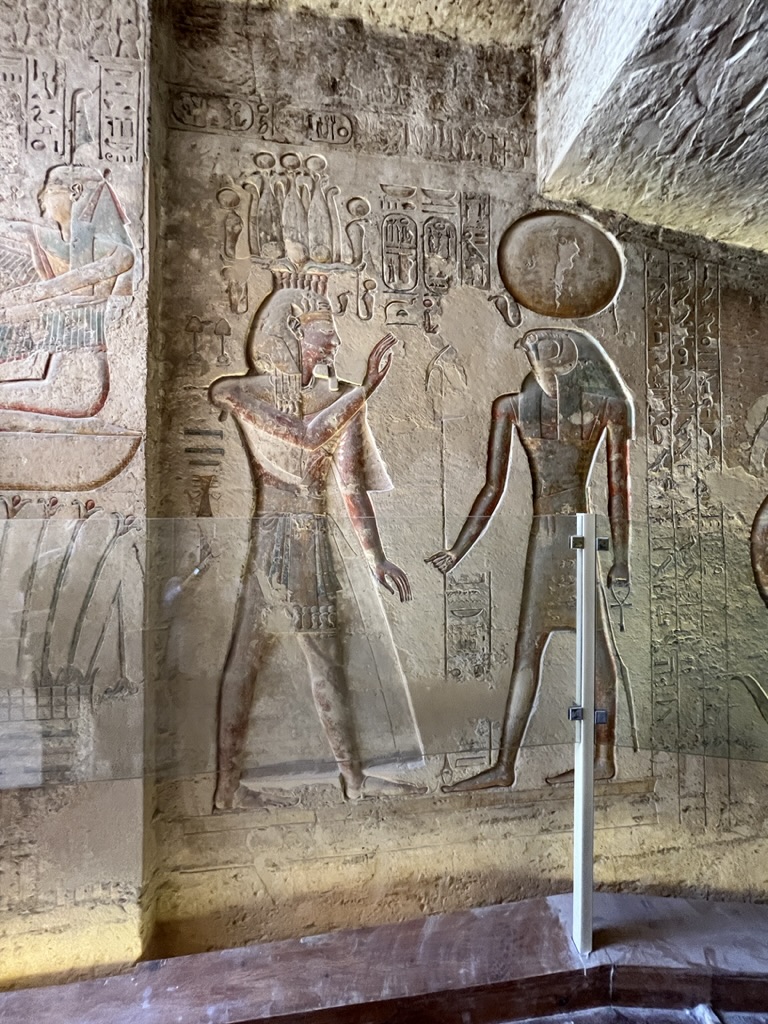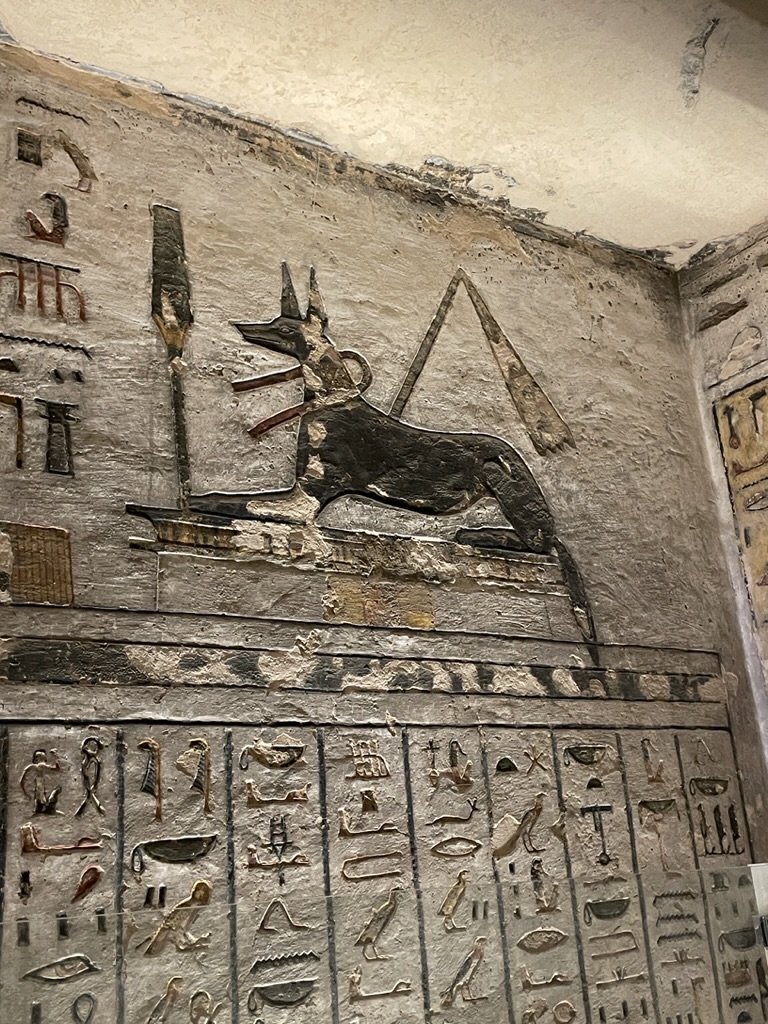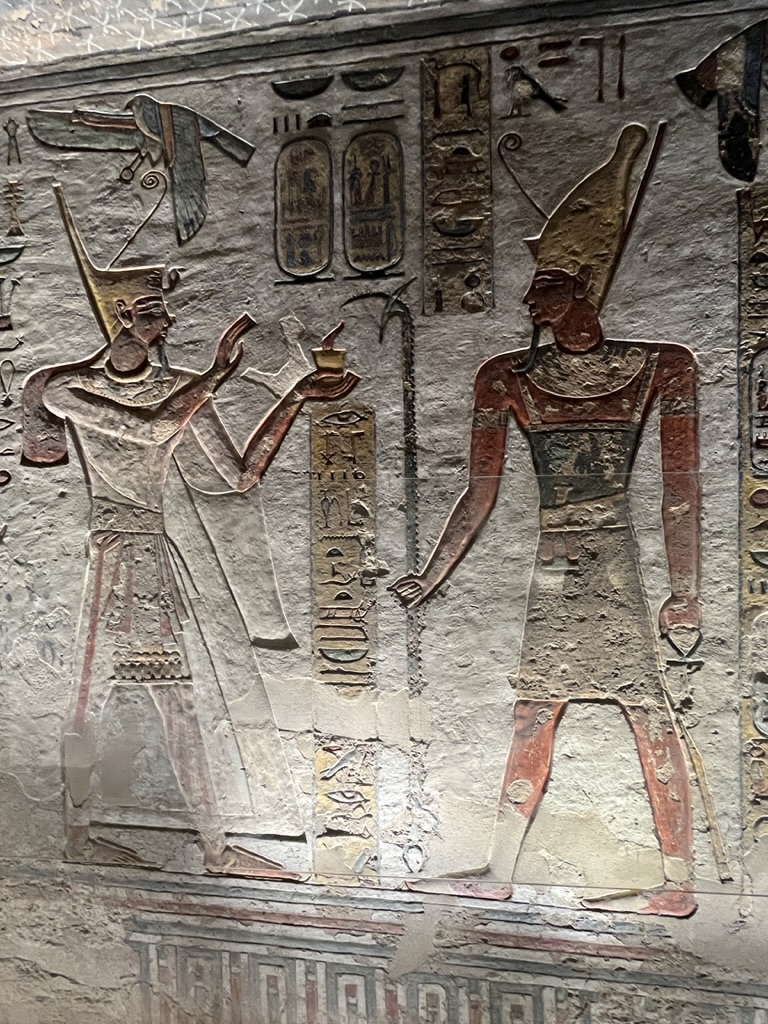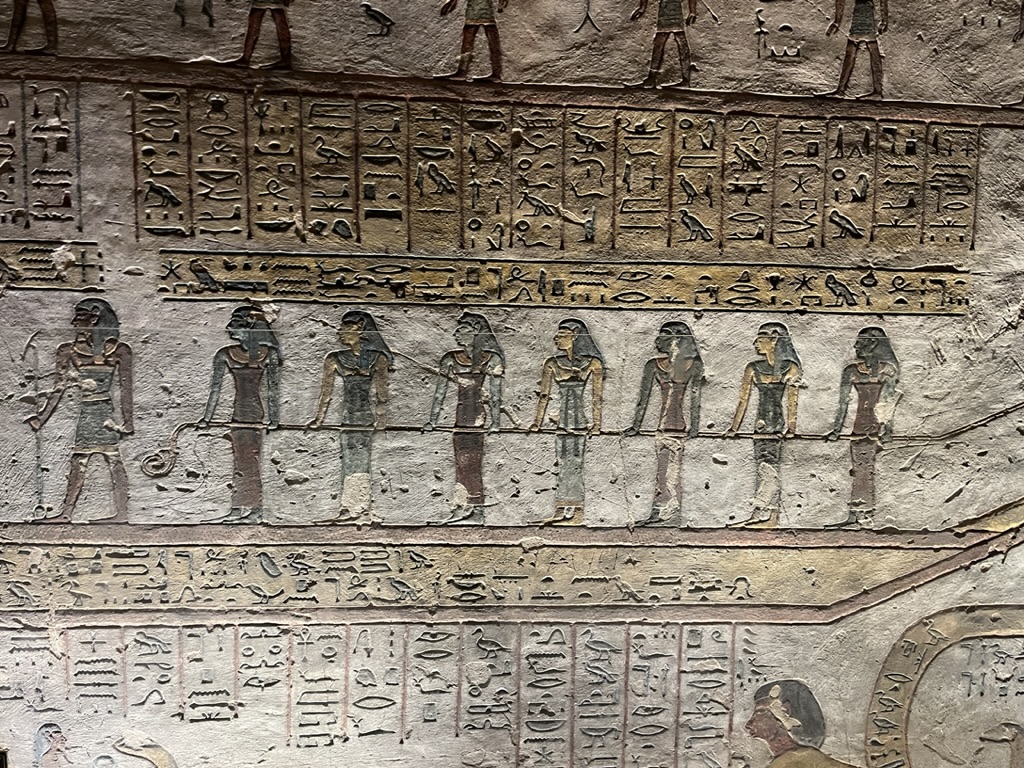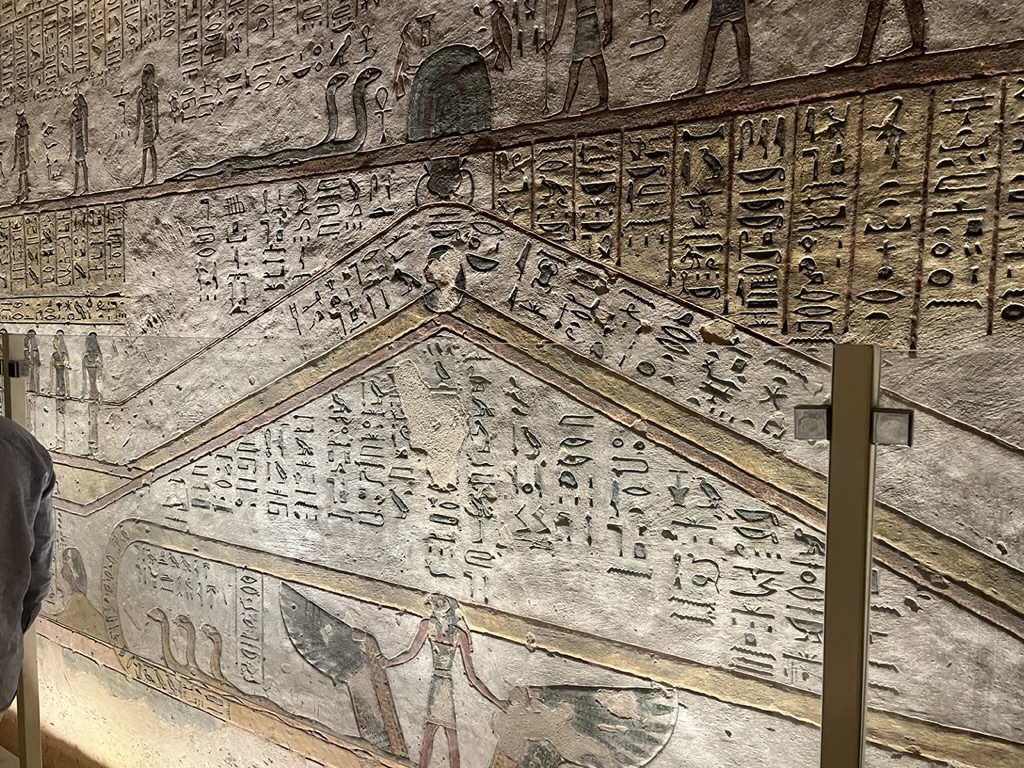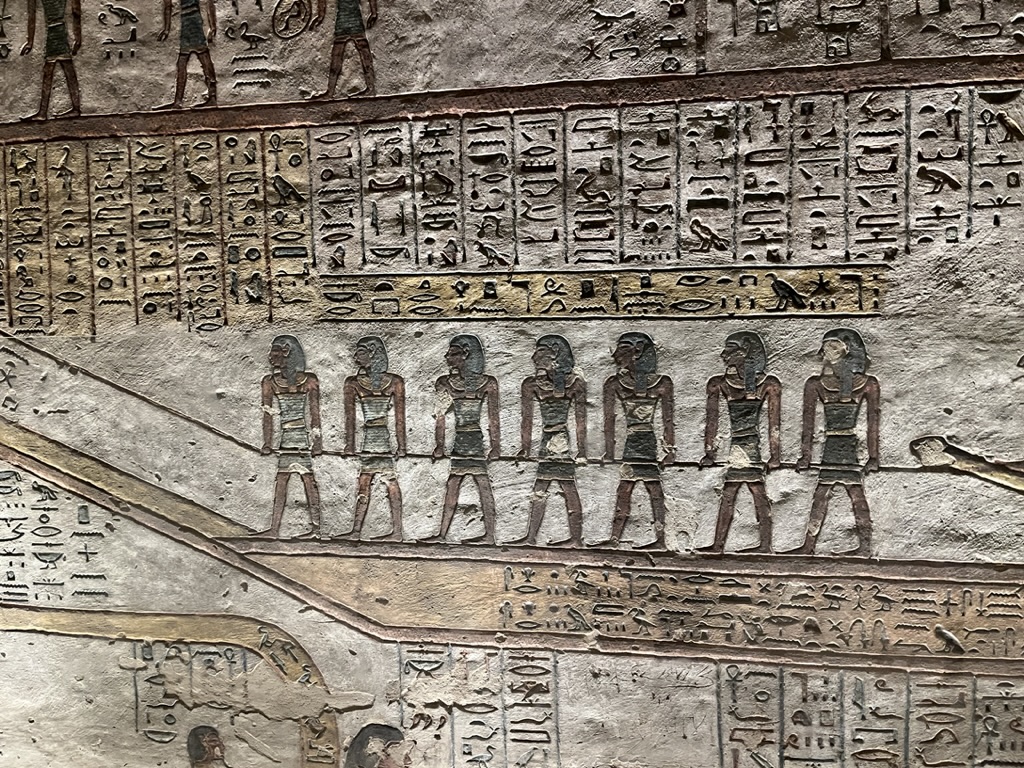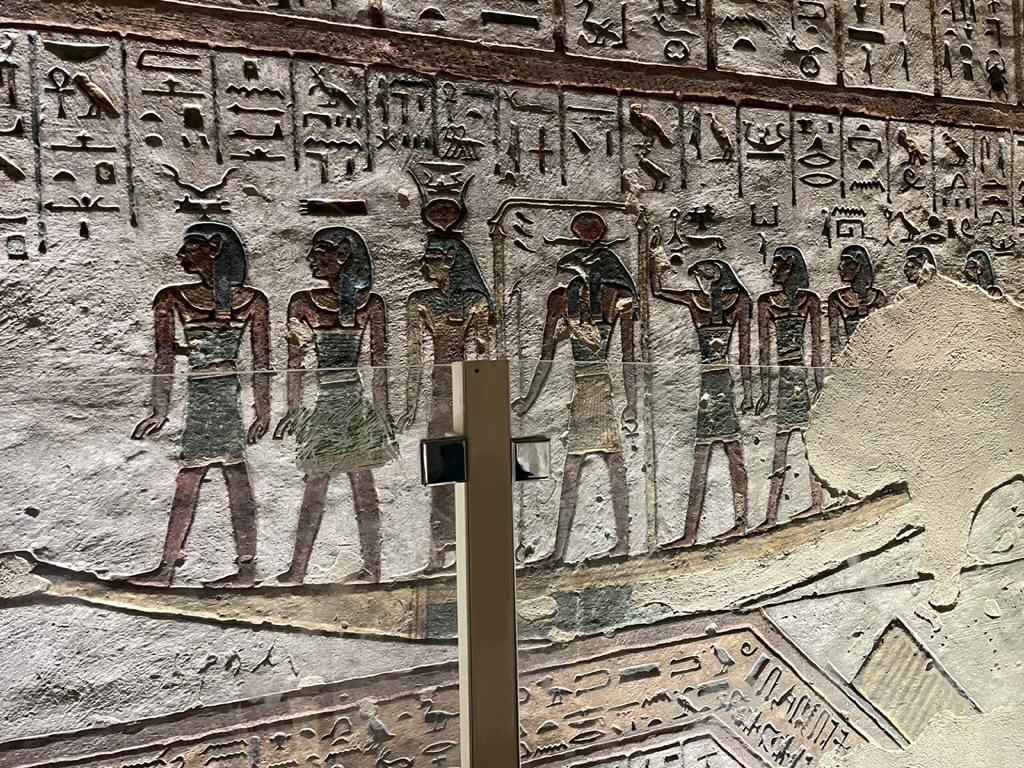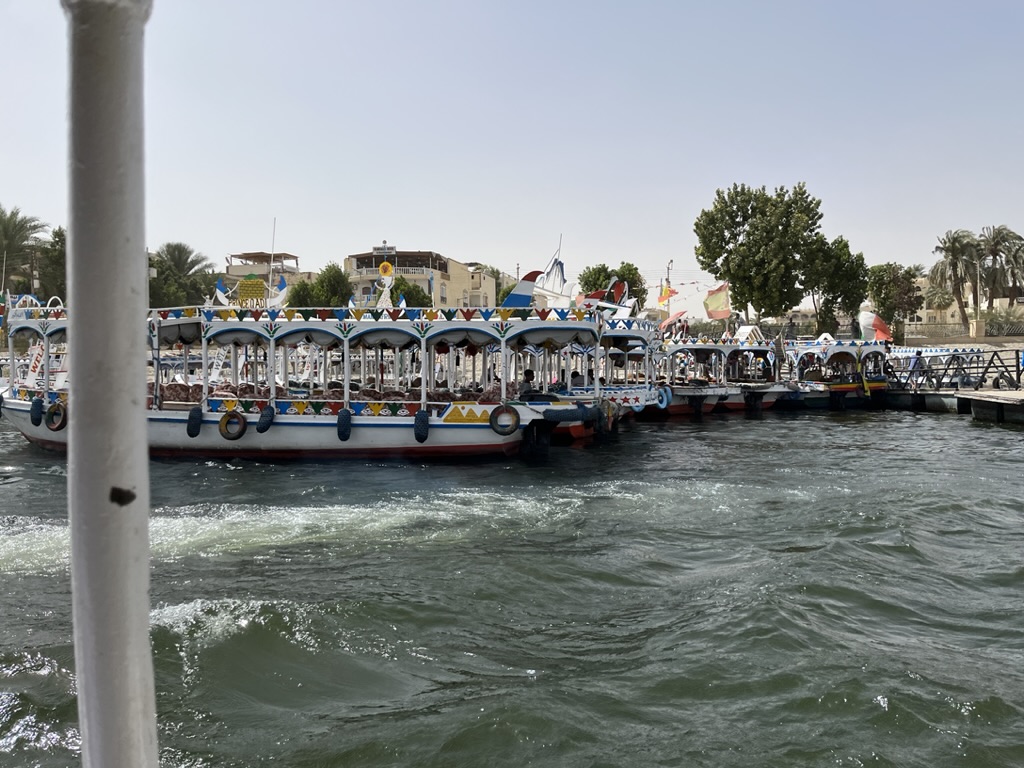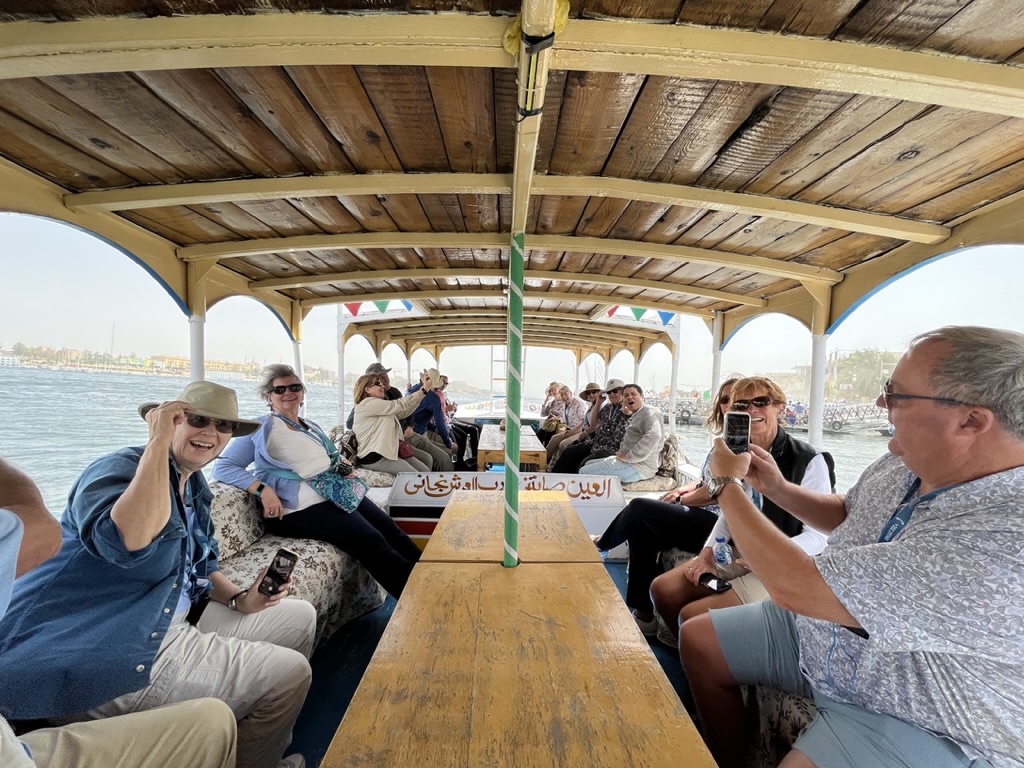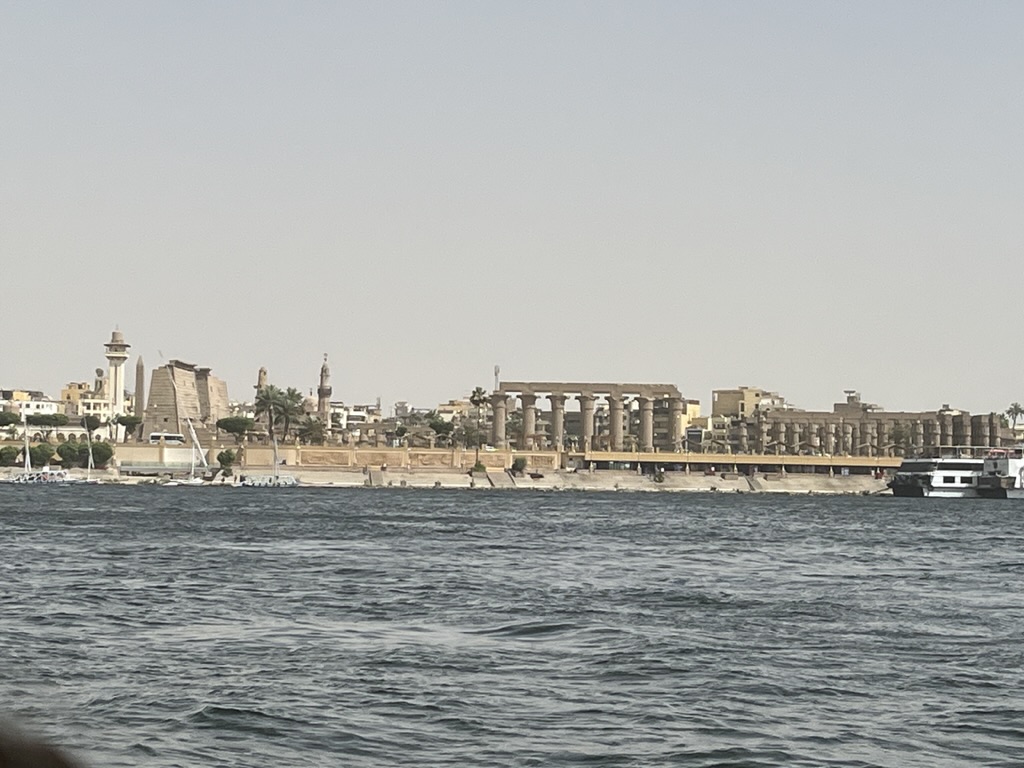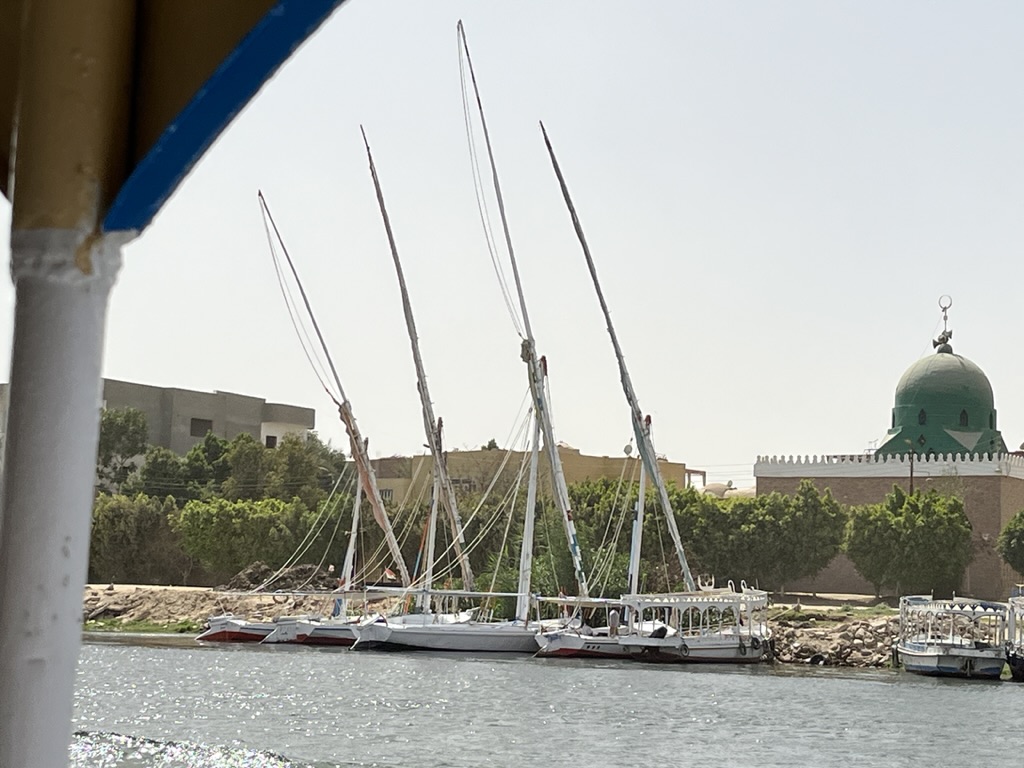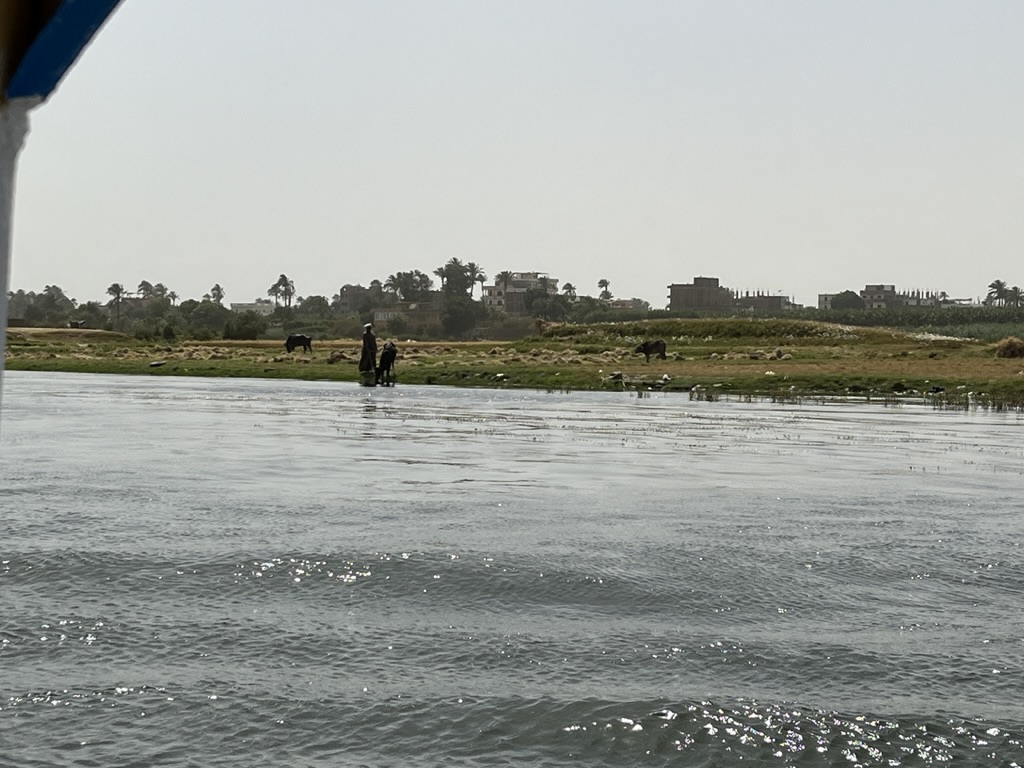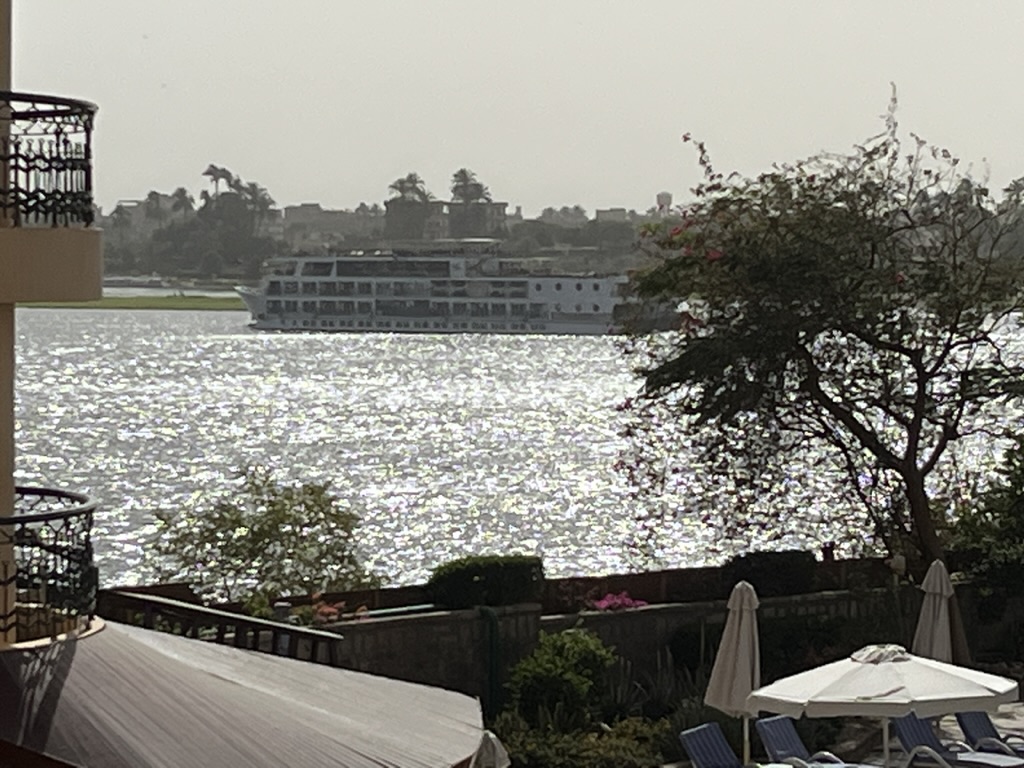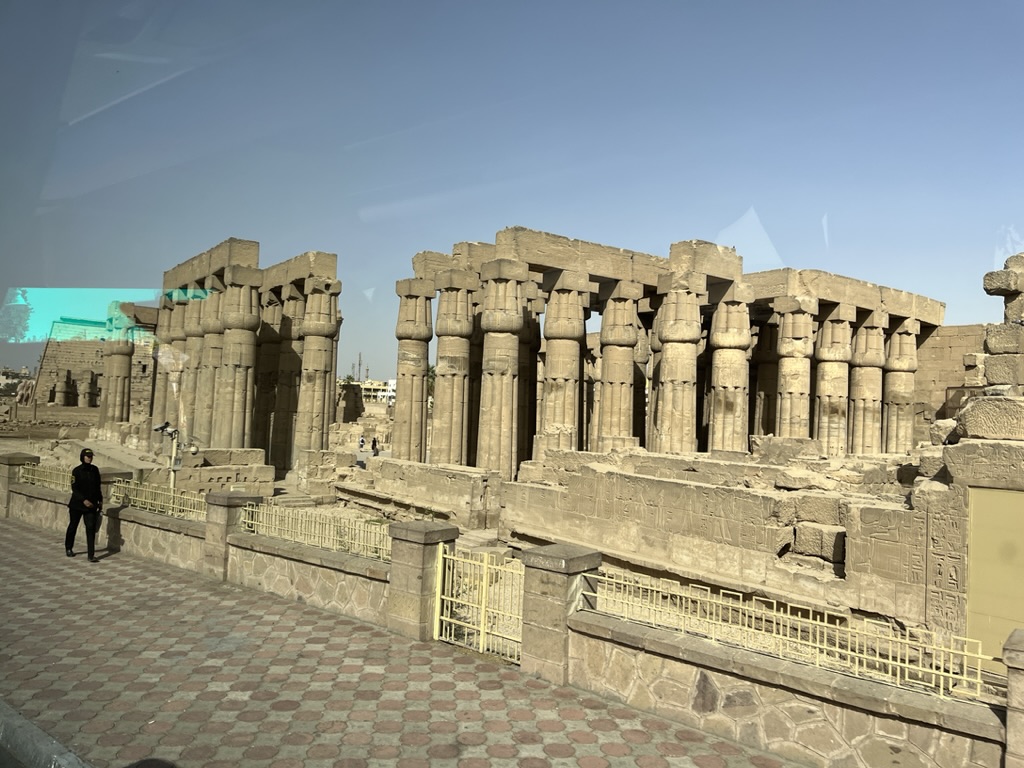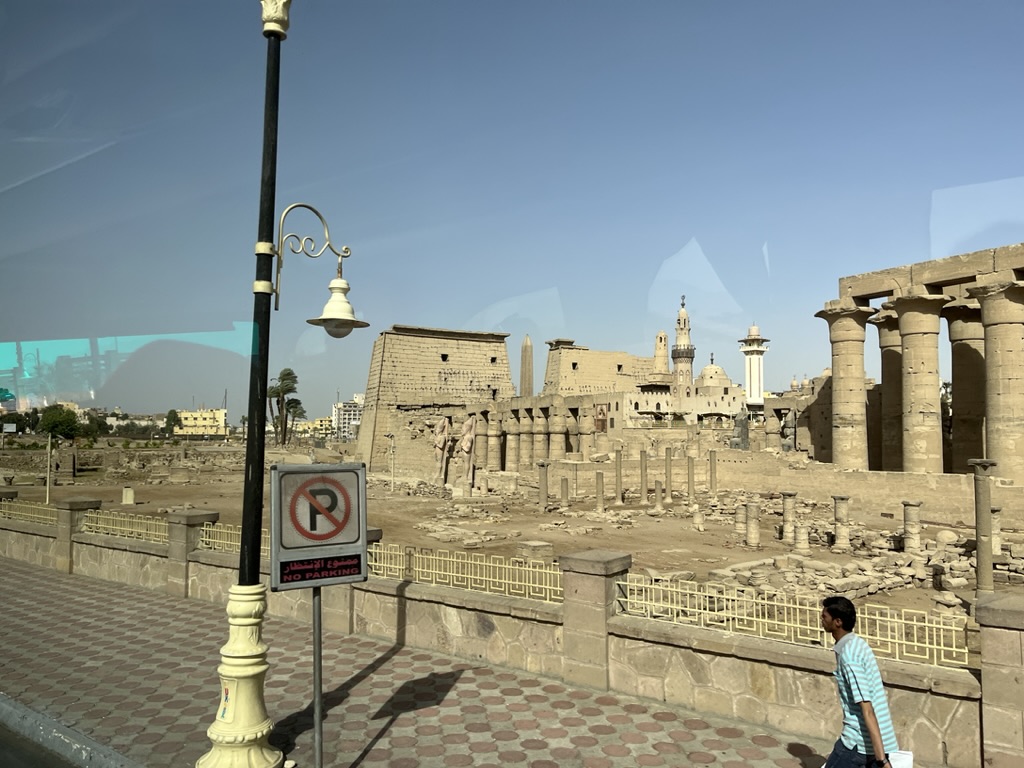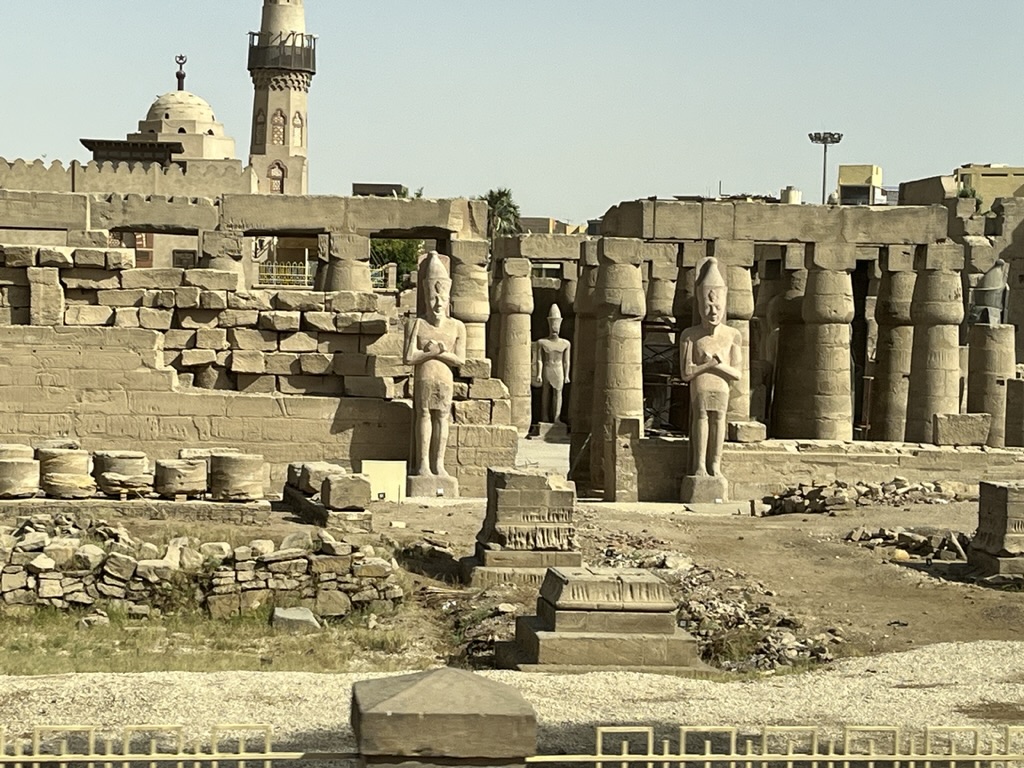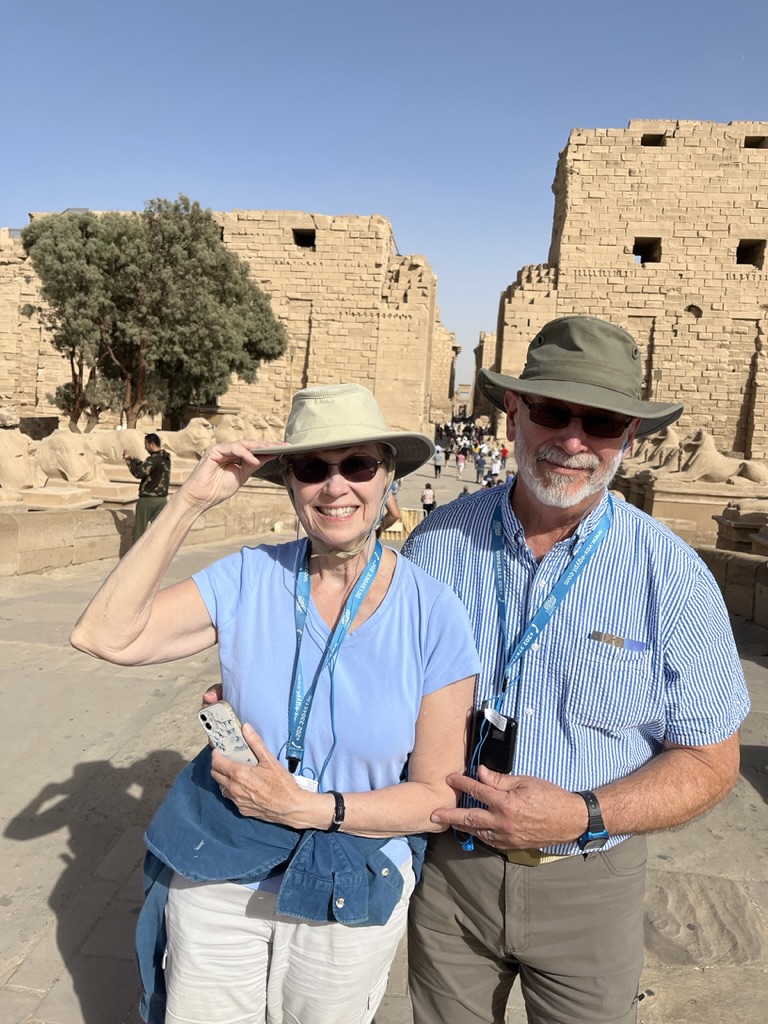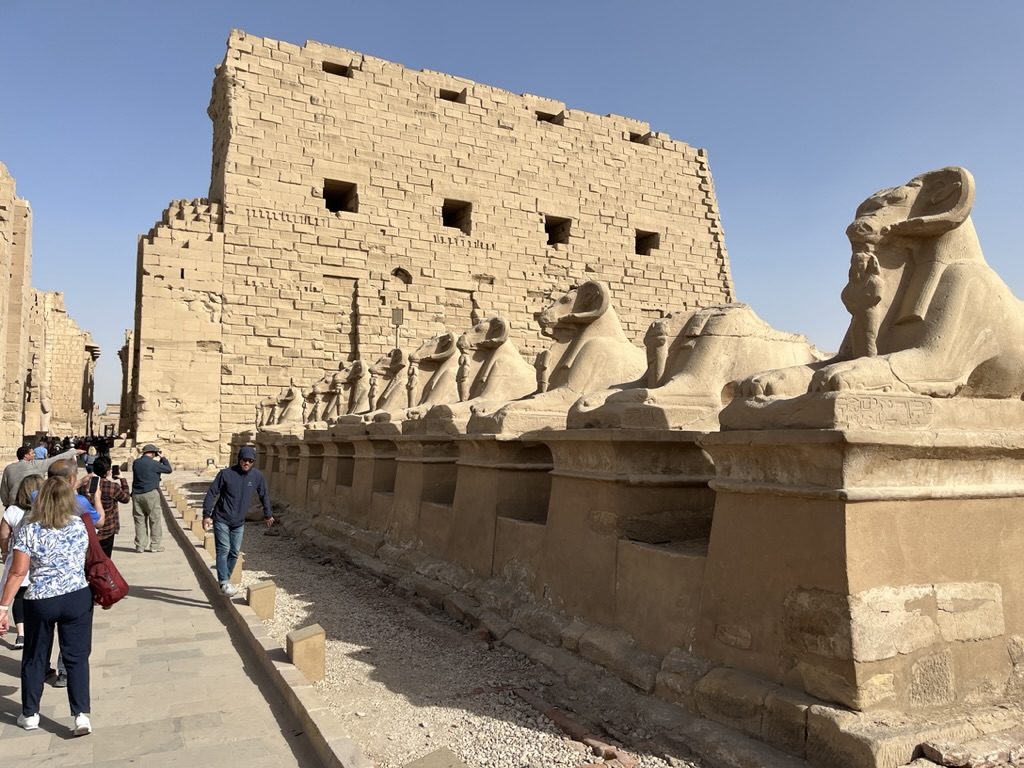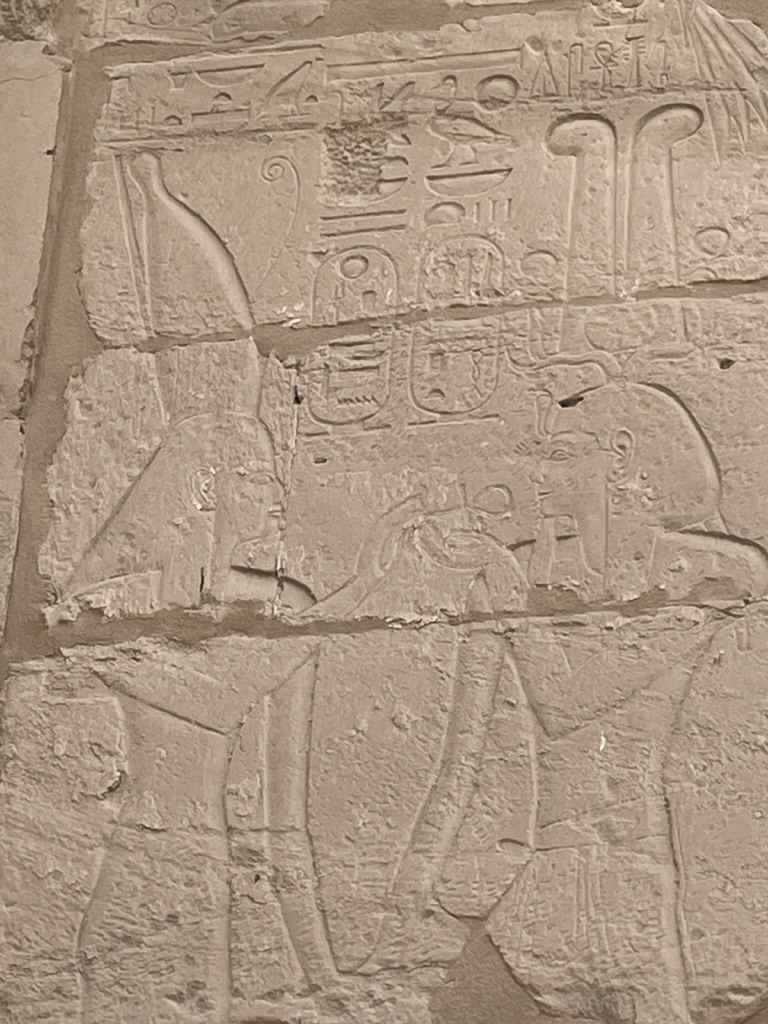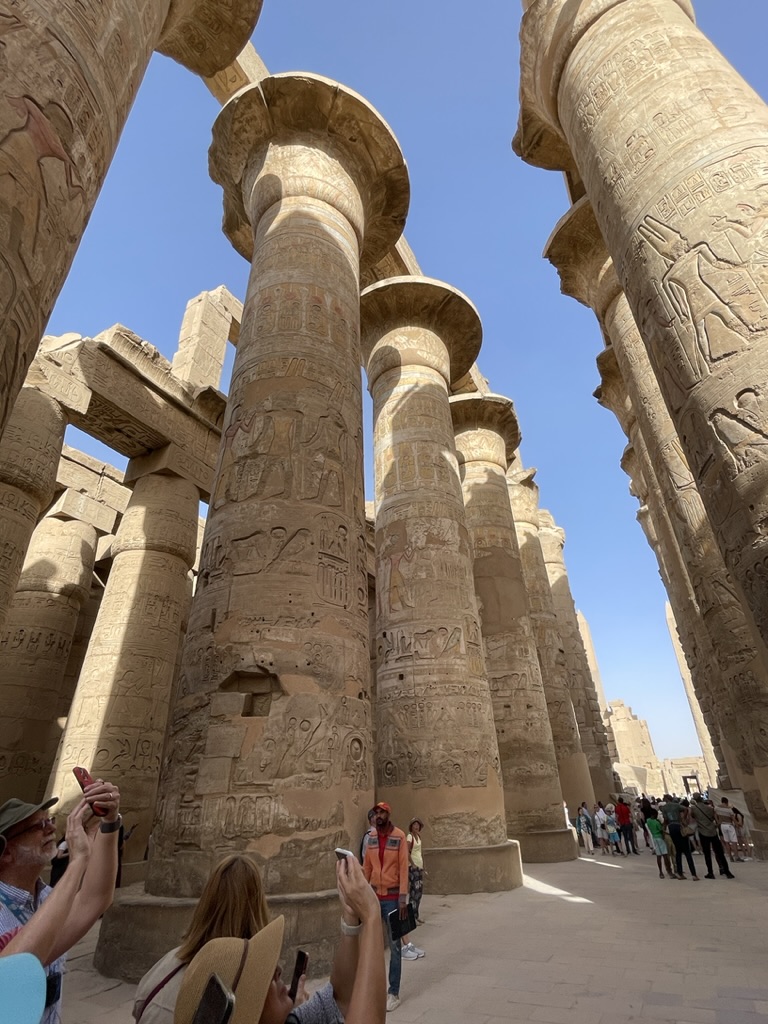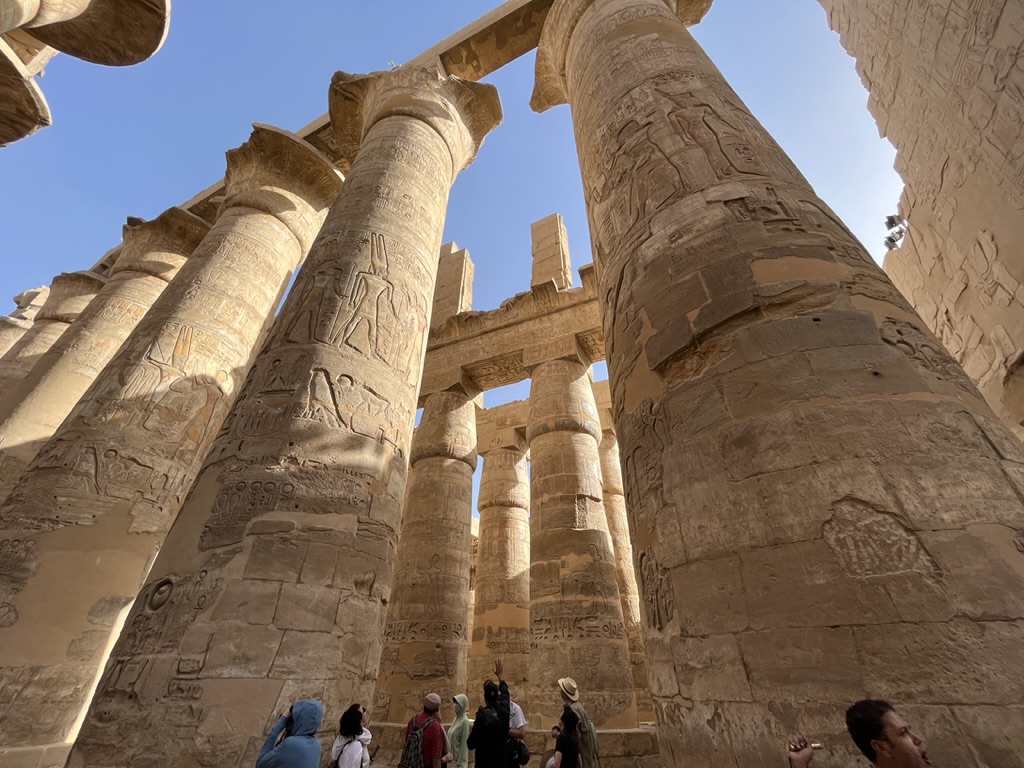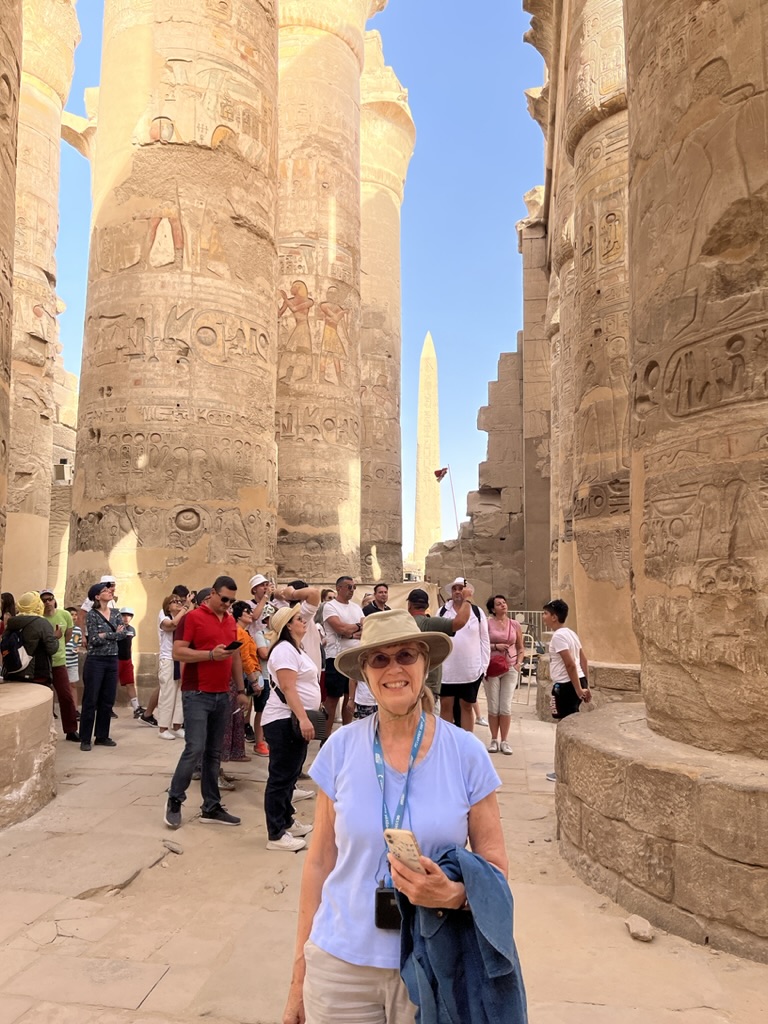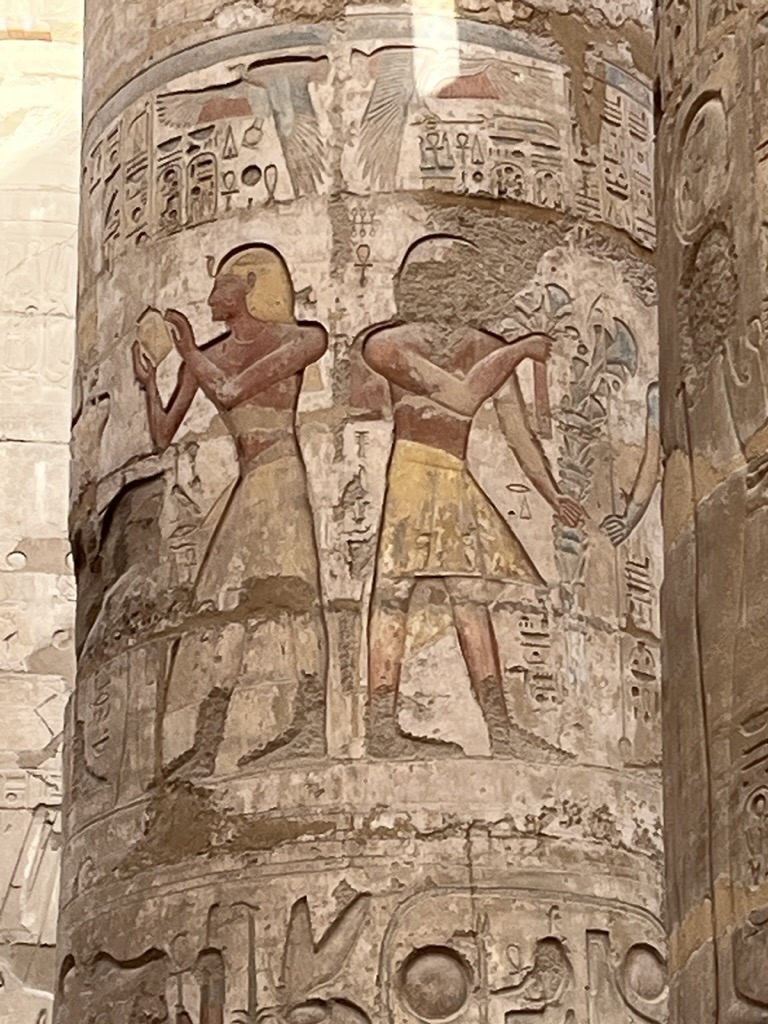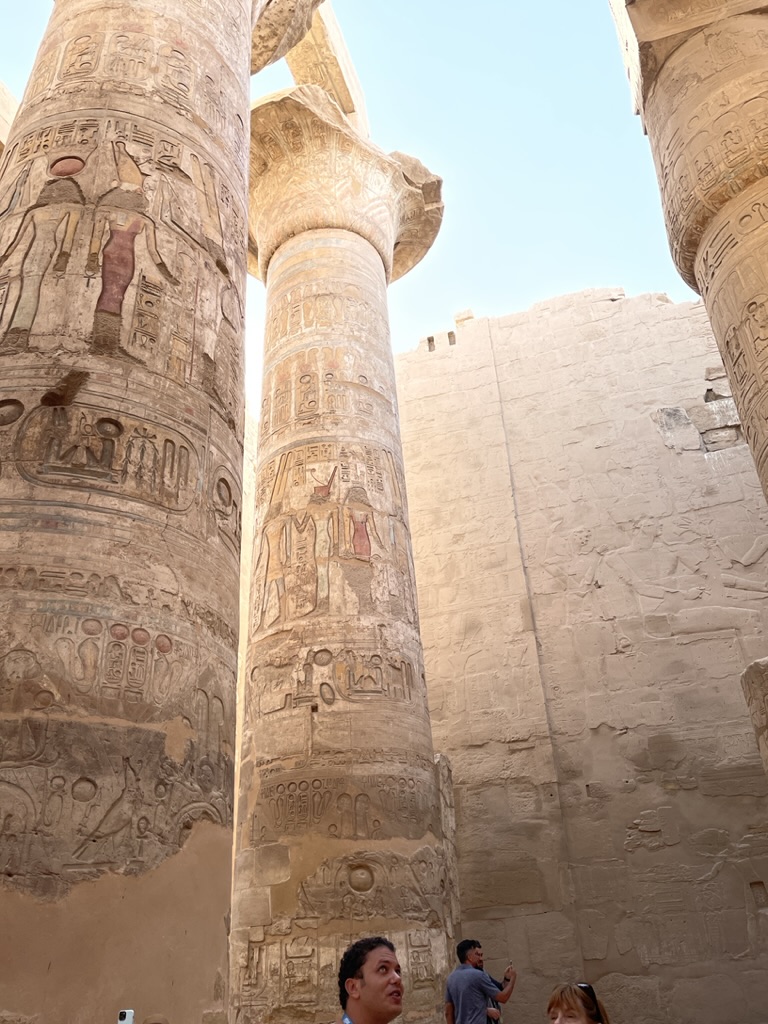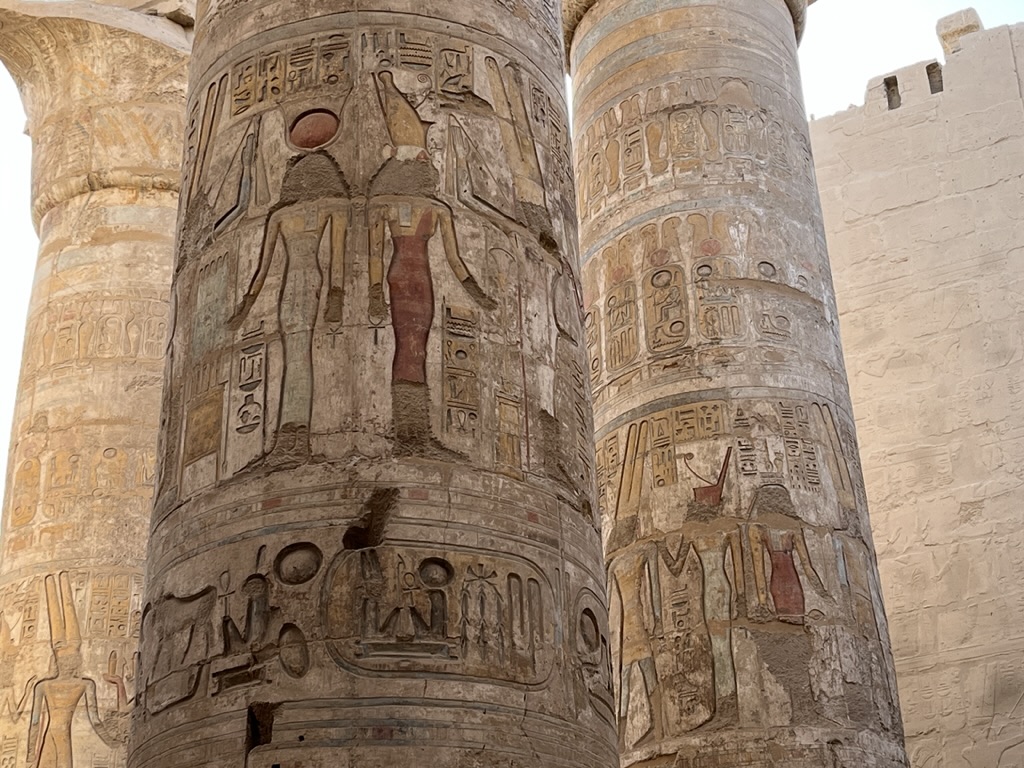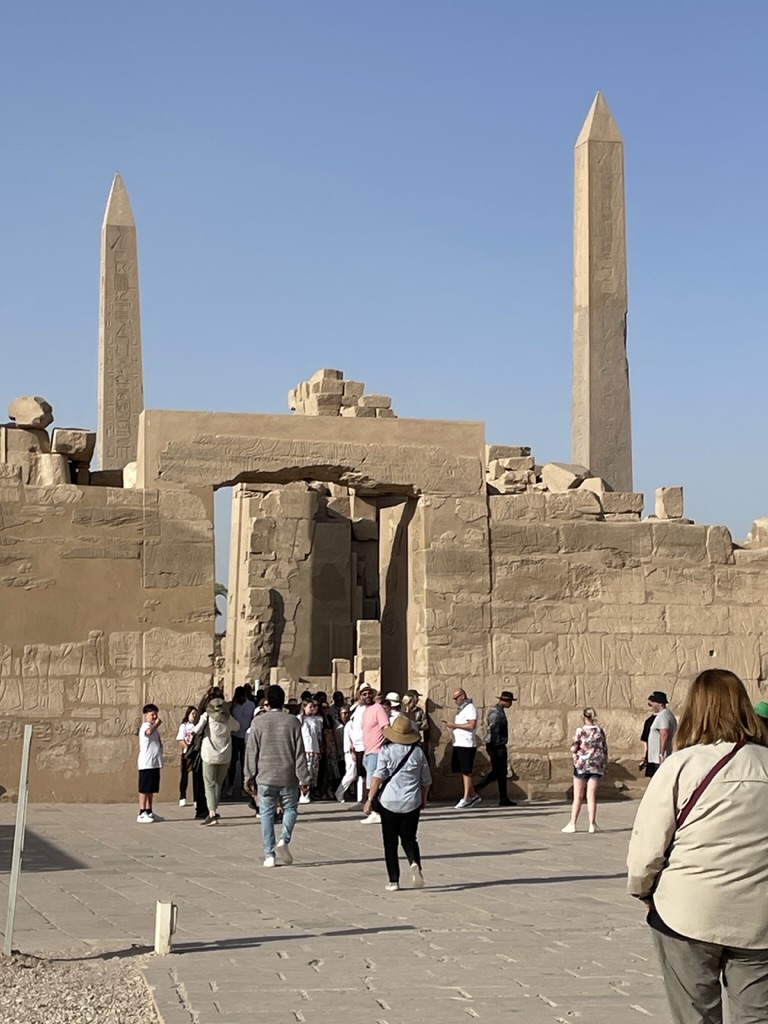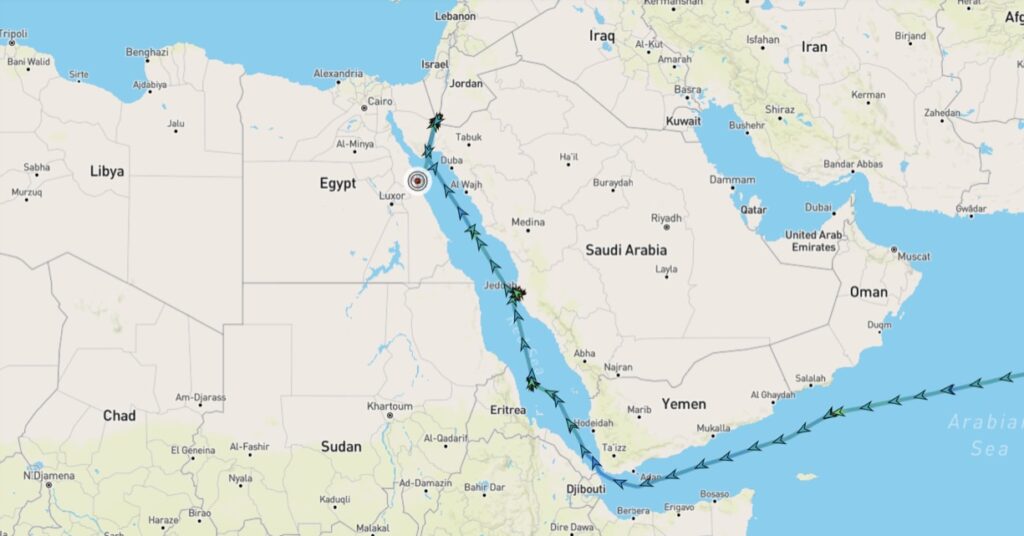
Up a bit earlier this morning (5:30 am).
You may remember that yesterday in Aqaba the friendly people at Passport Control kept our passports and returned them to the ship in bulk. This was so the Passport Control people at Safaga (Egypt) could have access to them all at once this morning. So as soon as the ship was cleared they could be given back to the passengers all stamped and ready to go.
I’m not saying that the process didn’t go smoothly. But I suppose it went about as smoothly as it could be. Fortunately several of our group figured out how to game the system and get to the “private excursion” passports.
So in fairly short order we (16 of us) were gathered in the Chef’s Table, had done the fluid adjustment, and were ready to go find our bus.
Also, (this is the first plug for Memphis Tours), by this time our account rep had WhatsApp’d me the contact information for our guide and he and I had been communicating with each other. So once we passed thru x-ray we walked out the door, to the first bus:
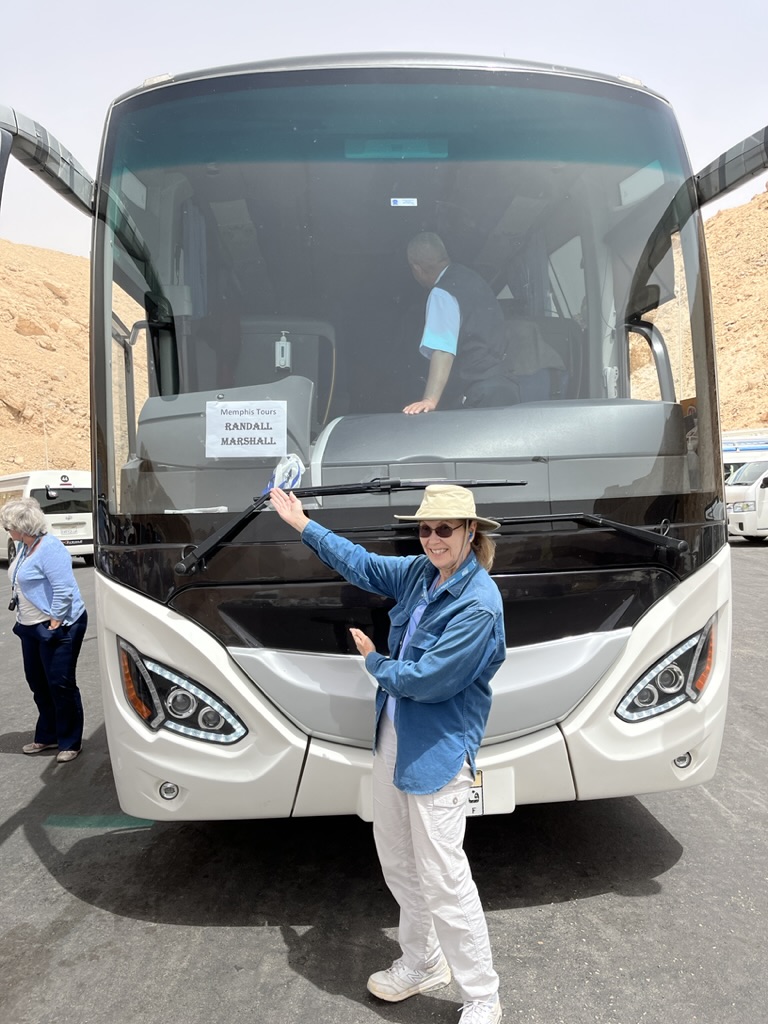
And said Hi to our guide Mohammad (“In Egypt everyone is named Mohammad, so call me Momo.”)
We boarded the bus (along with another couple who joined our group last minute), took a final roll call, handed the group over to Momo, and we were off…
…on a 3 1/2 hour drive to the Valley of the Kings.
We looked at the landscape. It was a dry and windy day – you could smell the dust and feel small particles of sand borne on the wind (a good place to wear a long robe and wear something to cover your face). The Eastern Desert of Egypt is very different from the Western (Sahara) desert. This is the other half of the raised volcanic shield land that was split in two by the Great Rift as the two tectonic plates move apart.
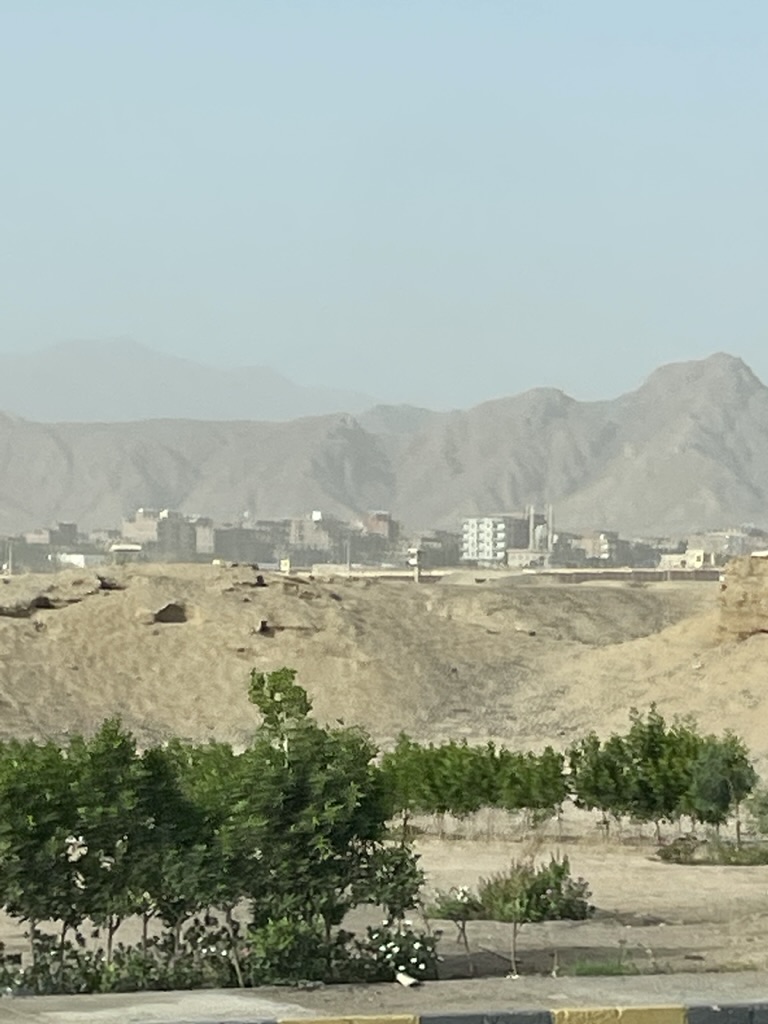
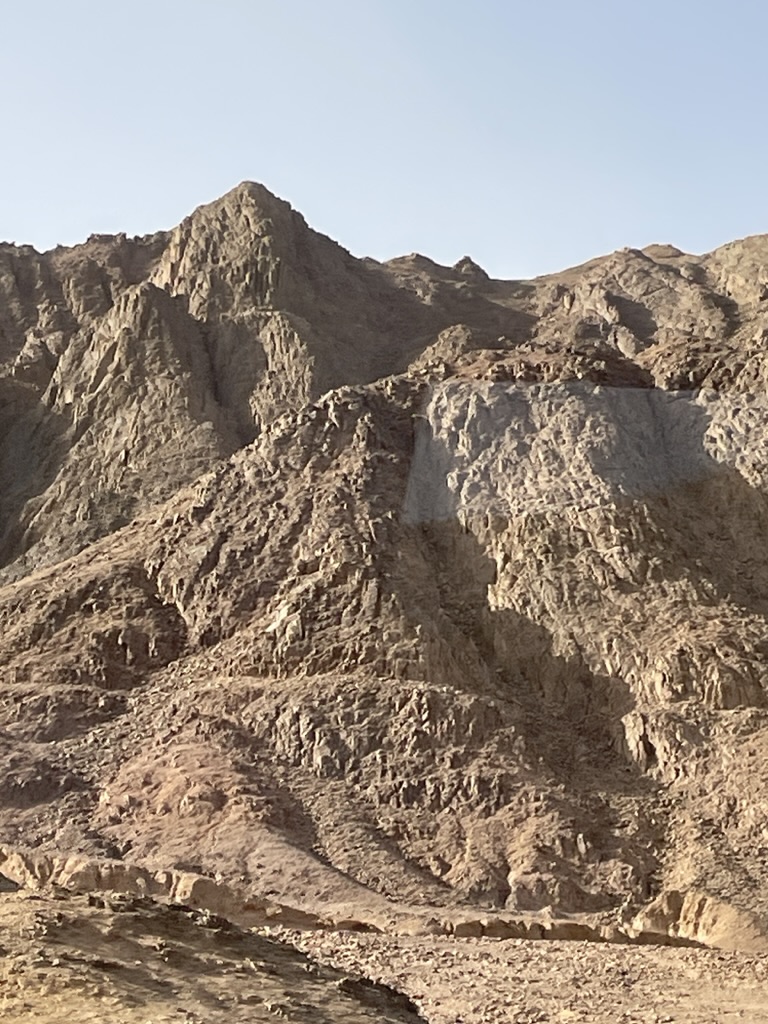
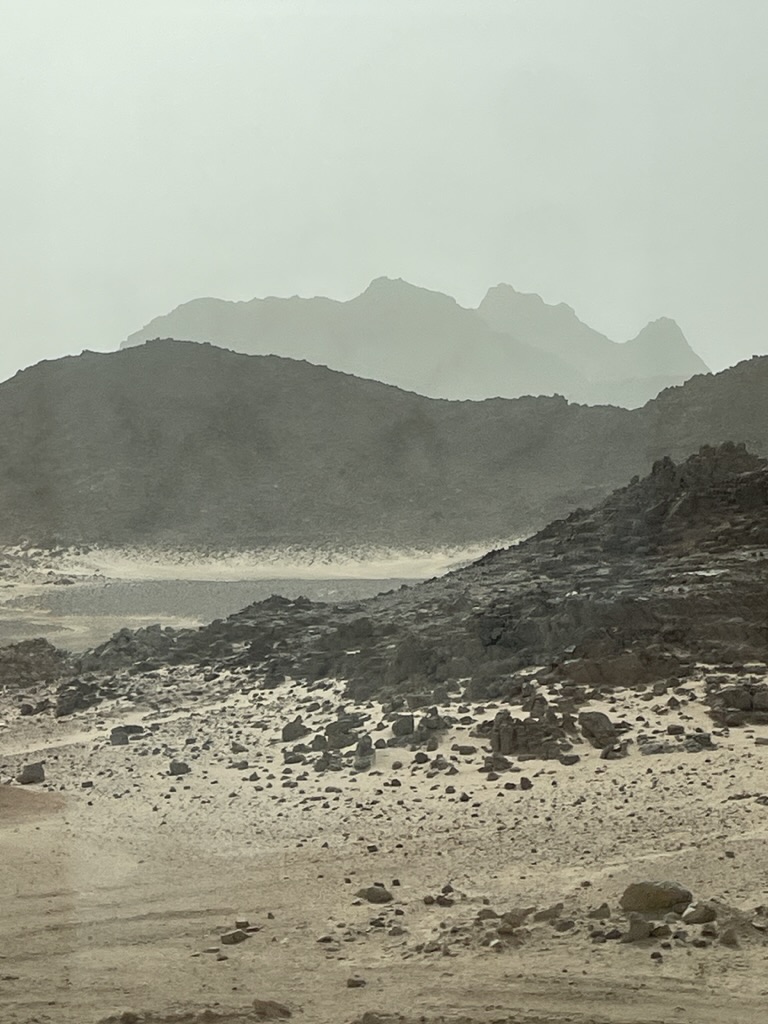
We stopped multiple times at police checkpoints.
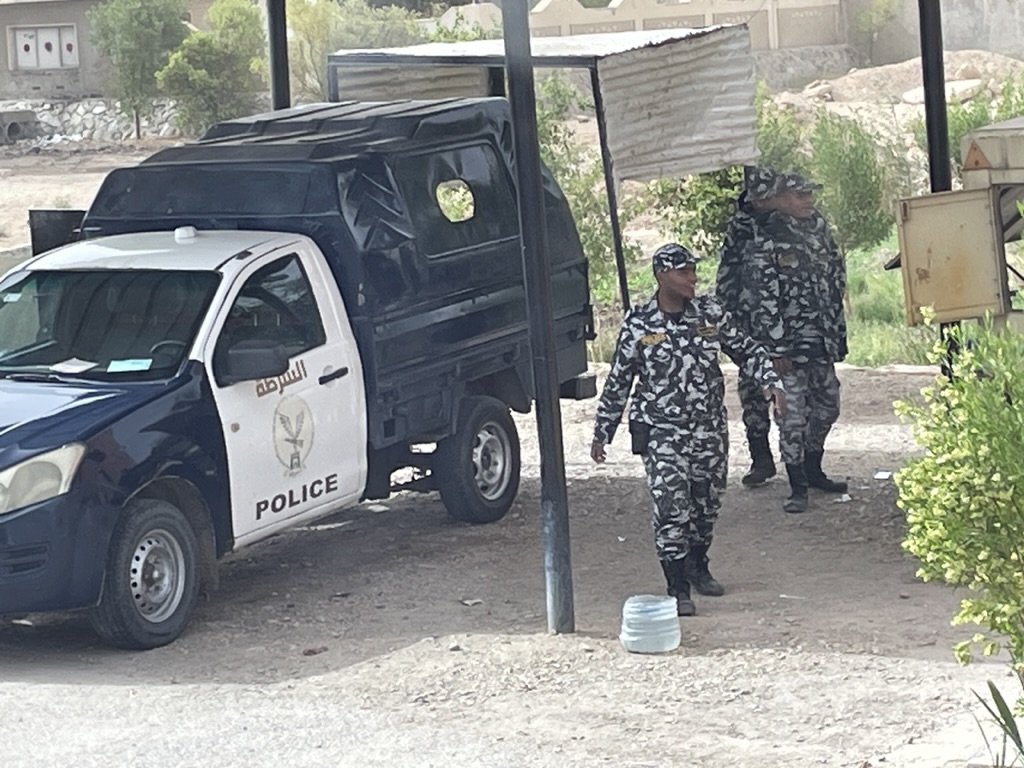
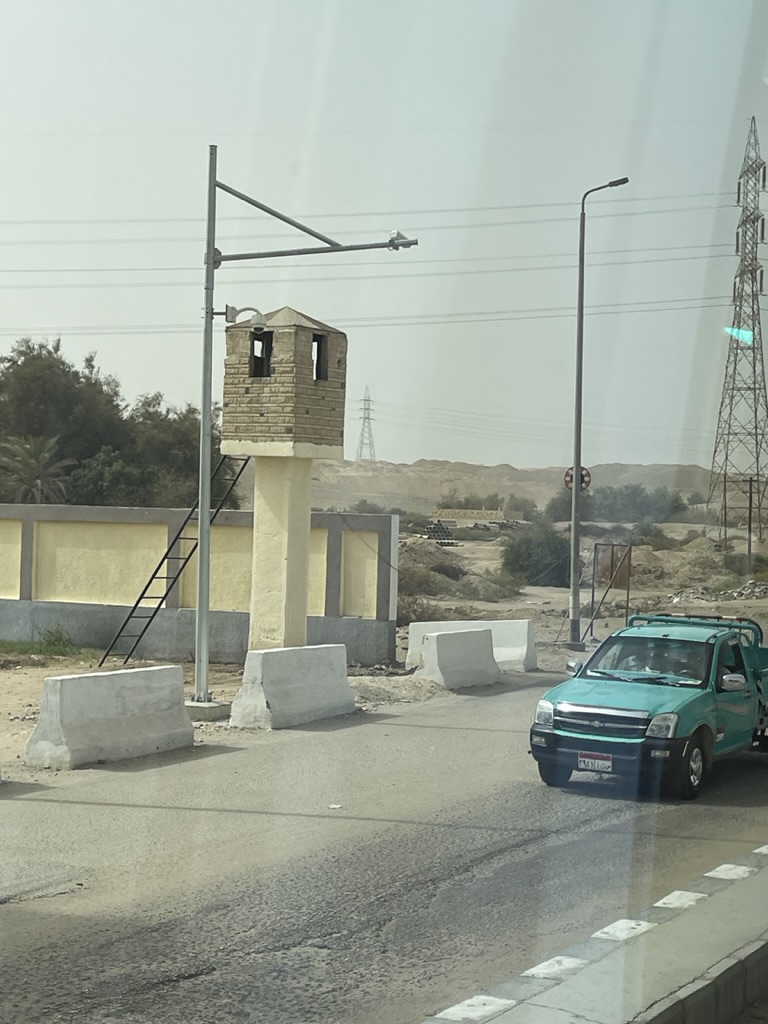
Eventually, as we got closer to the Nile River, the brown yellow gray of the desert turned to
Small note: What’s a Shaduf? See Cheryl’s Factoids (below).
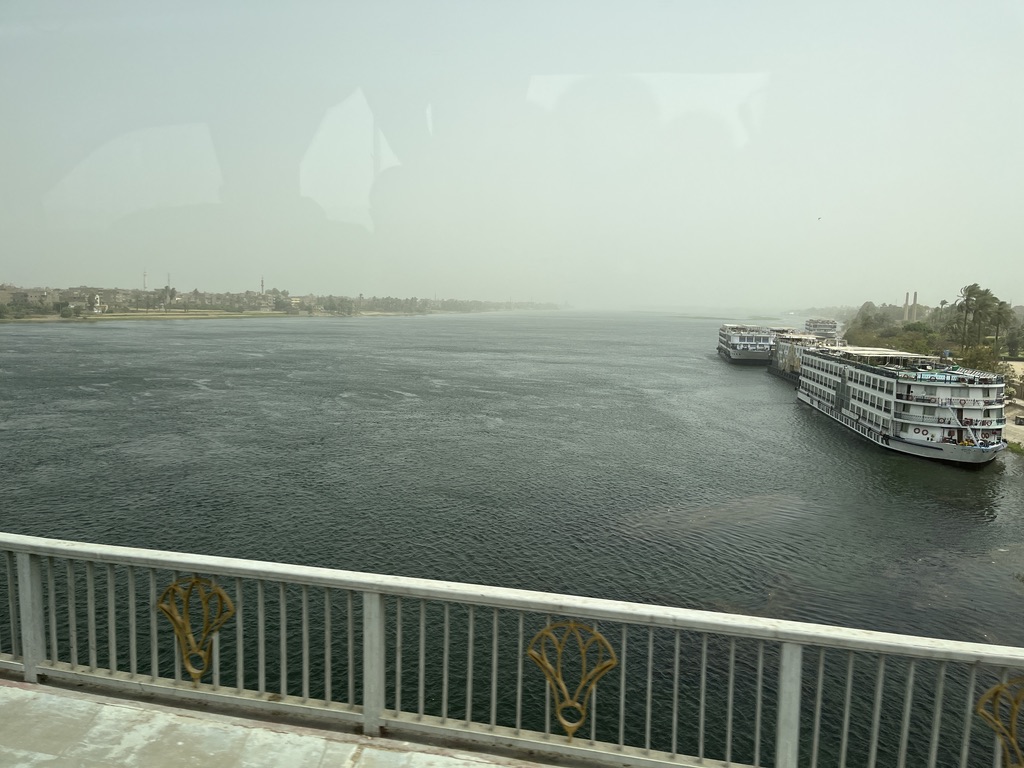
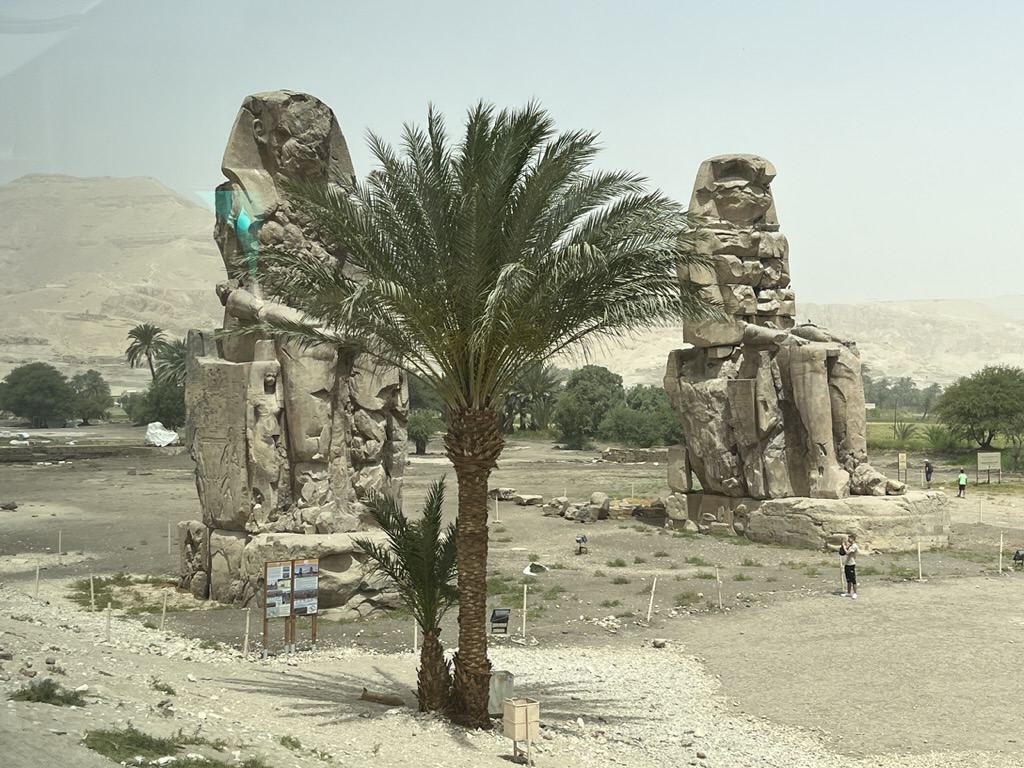
The ancient Egyptians saw a significant difference between life on the east side of the Nile (the sunrise side) and death on the west side of the Nile (the sunset side). So all the great burial sites, tombs, and funerary temples are on the west side.
The two statues above are at the entrance to a temple that is currently being excavated on the plain before the actual Valley of the Kings.
Also on this plain we drove past the Funerary Temple of Ramses II. This temple complex includes significant storage facilities for agricultural produce.
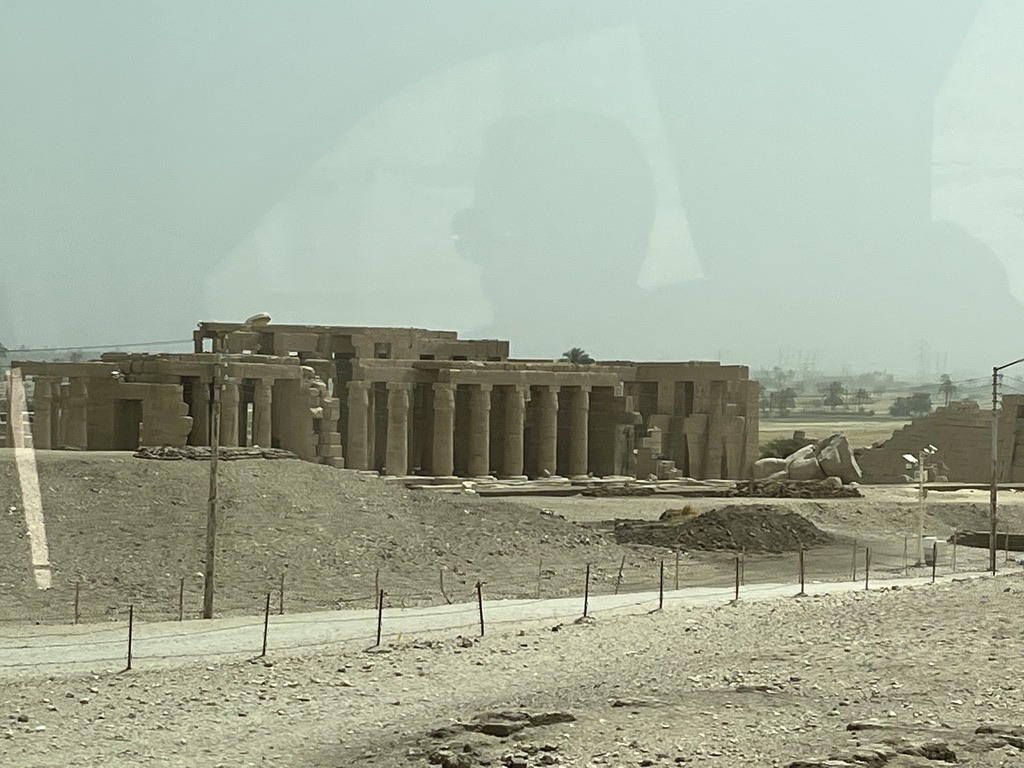
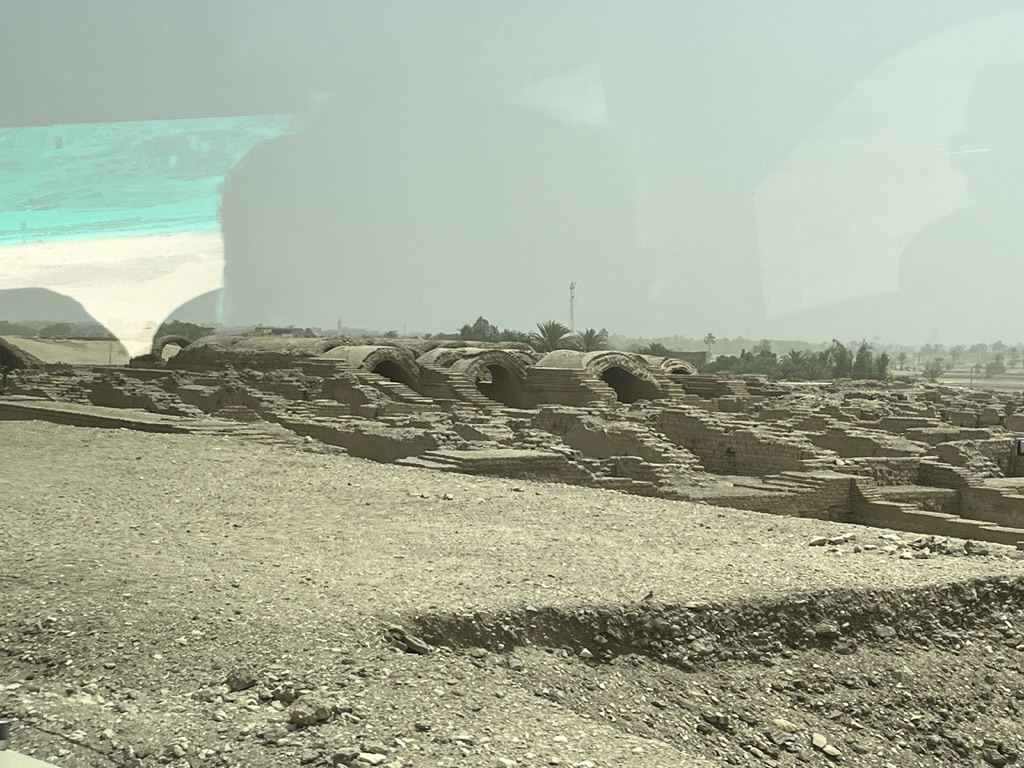
We also noted many tombs carved into the face of the hill – these tombs and the village below were for the workers that built the mortuary temples for the pharaohs.
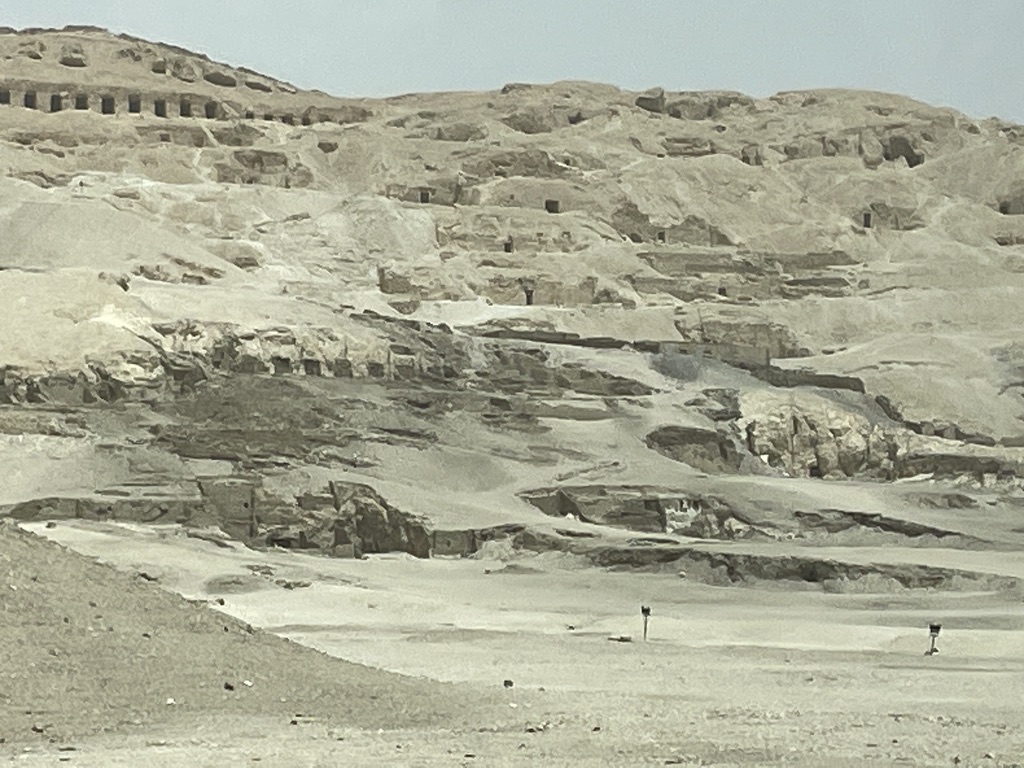
After a short drive into the valley itself we arrived at the visitor’s center.
Then we loaded onto golf carts for the short ride into the center of it all.
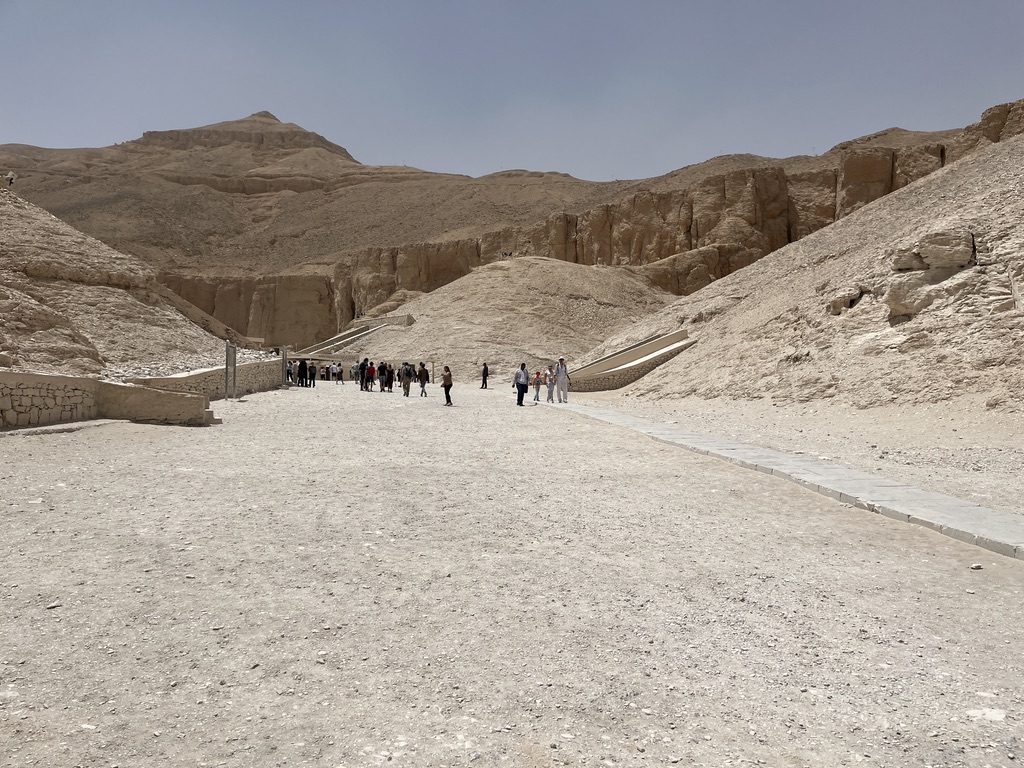
The stone here is so white and glaring under the bright sun that Cheryl’s eyes hurt. Notice the pyramid shape to the mountain under which the kings are buried.
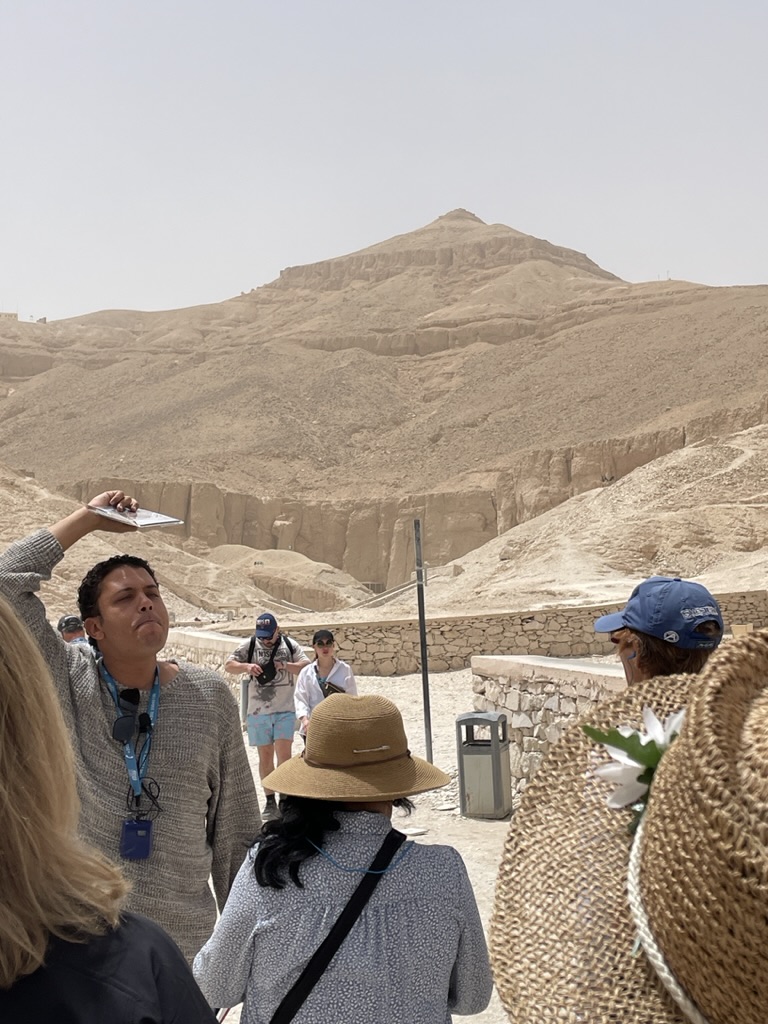
Our first tomb was Ramses IV
Next we saw the tomb of Ramses IX.
This tomb is significant because it’s the first tomb to show images of hell and talk about the Book of the Dead – which lists all the requirements that the deceased Pharaoh had to fulfill and the hazards he had to overcome if his spirit was to successfully ascend to the land of eternal life.
After that we needed a bit of a reward, so Momo handed out special access passes to:
The tomb is very small – he died at age 19 after reigning just 10 years. He was actually a very unremarkable king – didn’t accomplish much, no lasting legacy. His only claim to fame is that his tomb was never robbed, so when it was discovered in November of 1922 by Howard Carter, his great treasure of grave goods were still there. However, his is the only mummy on display in the valley.
Our final tomb was Ramses III
After Ramses III we took a group photo.
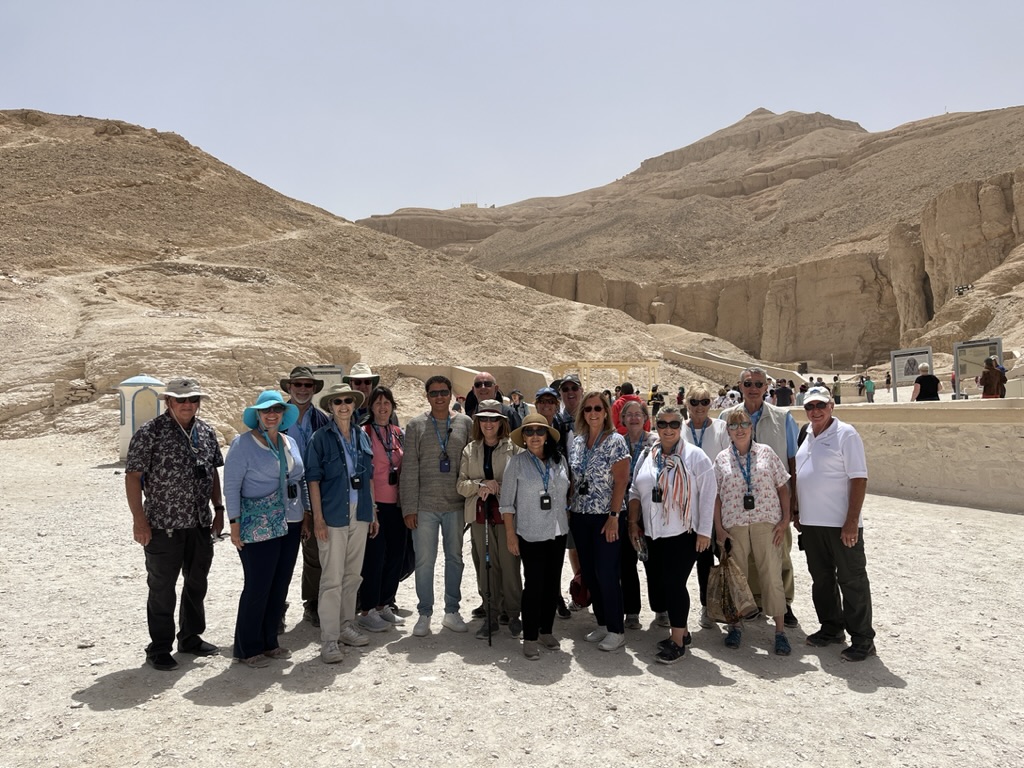
Acutally our guard took the photo.
About our guard.
Egypt requires that all tours with foreigners have an armed guard.
He spent the day with us – sitting in the front seat of the bus and being a constant presence somewhere around our group. He was a nice guy, though pretty quiet. He would have taken a picture with us if we’d asked, but somehow we never got around to it.
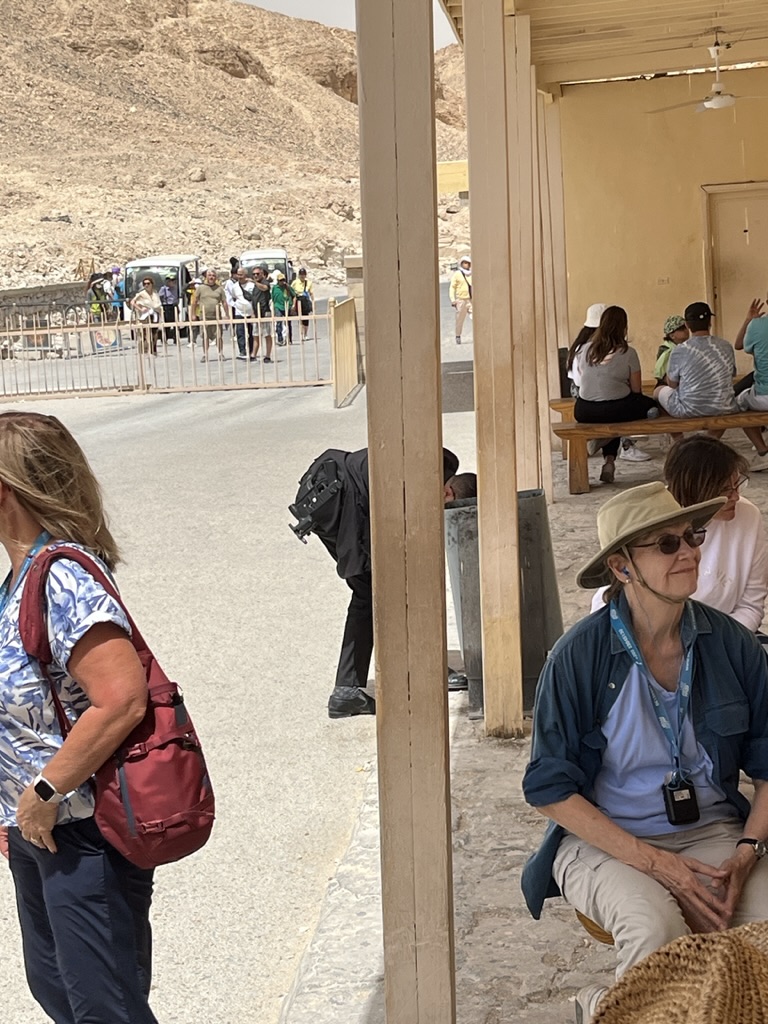
Back on the bus we took a short drive to an alabaster workshop. It was one of those places set up to cater to the tour group crowd with a presentation followed by the opportunity to purchase. These people did a great job with the presentation part – part about the product and part comedy routine. I bought an alabaster owl.
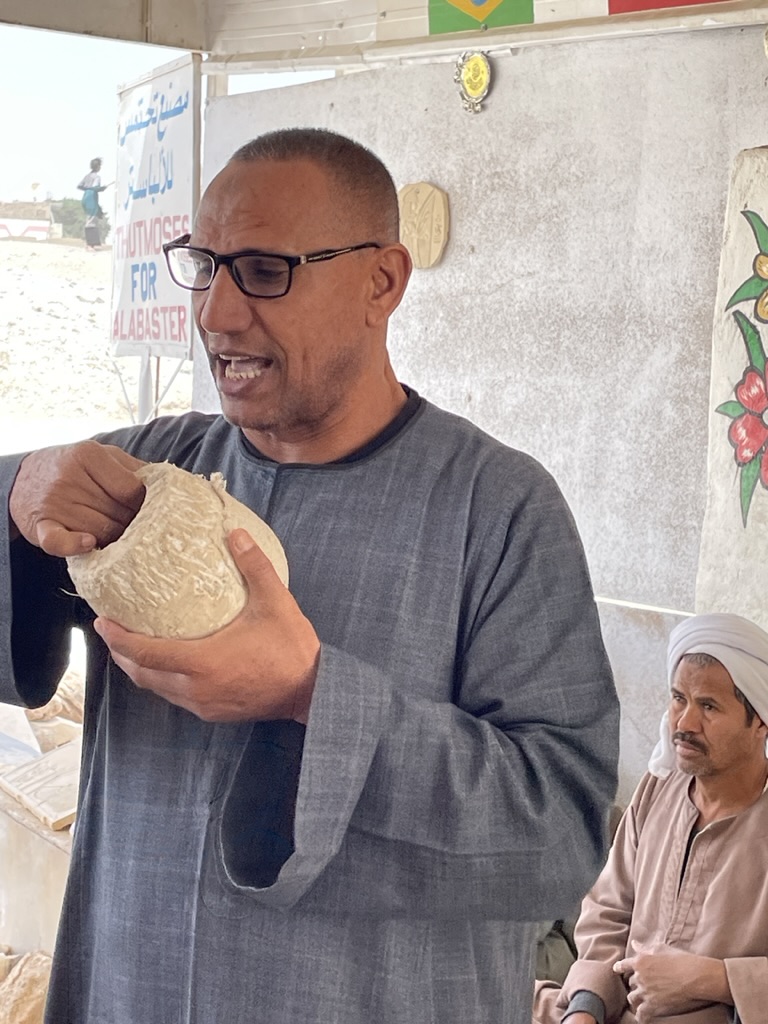
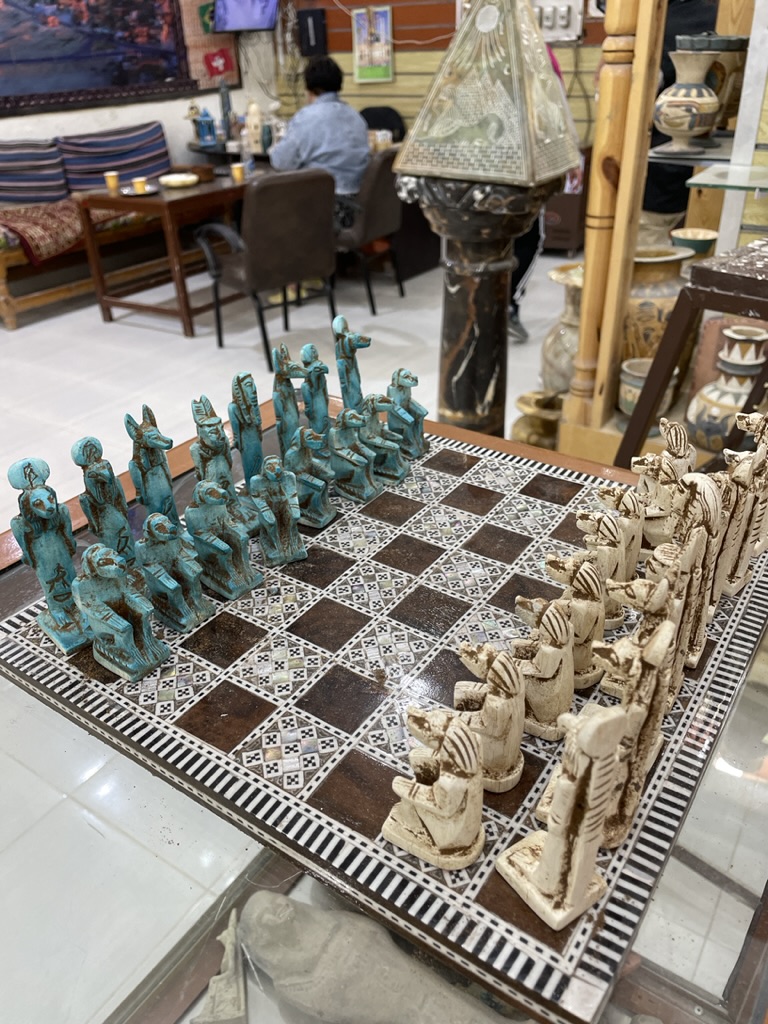
Our next stop was the boat dock. As Momo explained it, we could take the bus back upriver and across the bridge to the restaurant for lunch (which would take about 45 minutes) or we could take a boat across the Nile to the restaurant and save 15 minutes. Boating on the Nile? I think we can do that.
Again, Thank you Memphis Tours!
Touring the Nile River on a Viking River ship -we may have to try that out.
Our next stop on the East side was the Karnak Temple complex (in Luxor). Along the way we passed the Luxor Temple – its column heads look like closed papyrus blossoms.
Momo explained that they have just finished purchasing property and are in the process of restoring the 1.7 mile long avenue of sphinxes between the Luxor temple and the Karnak temple.
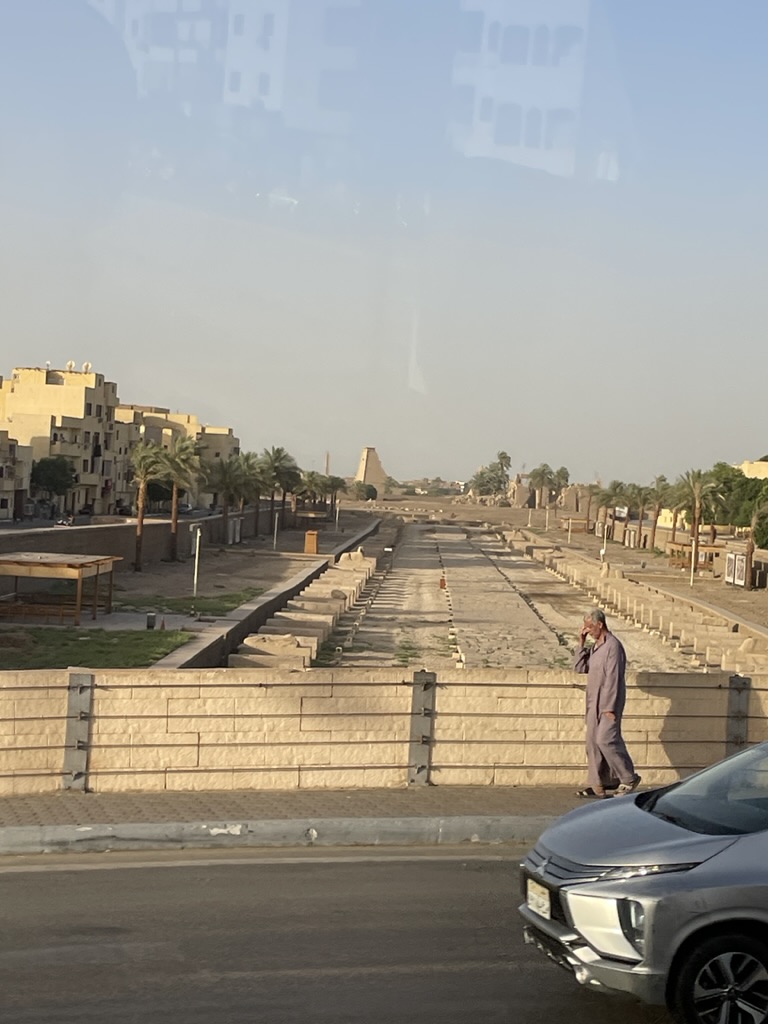
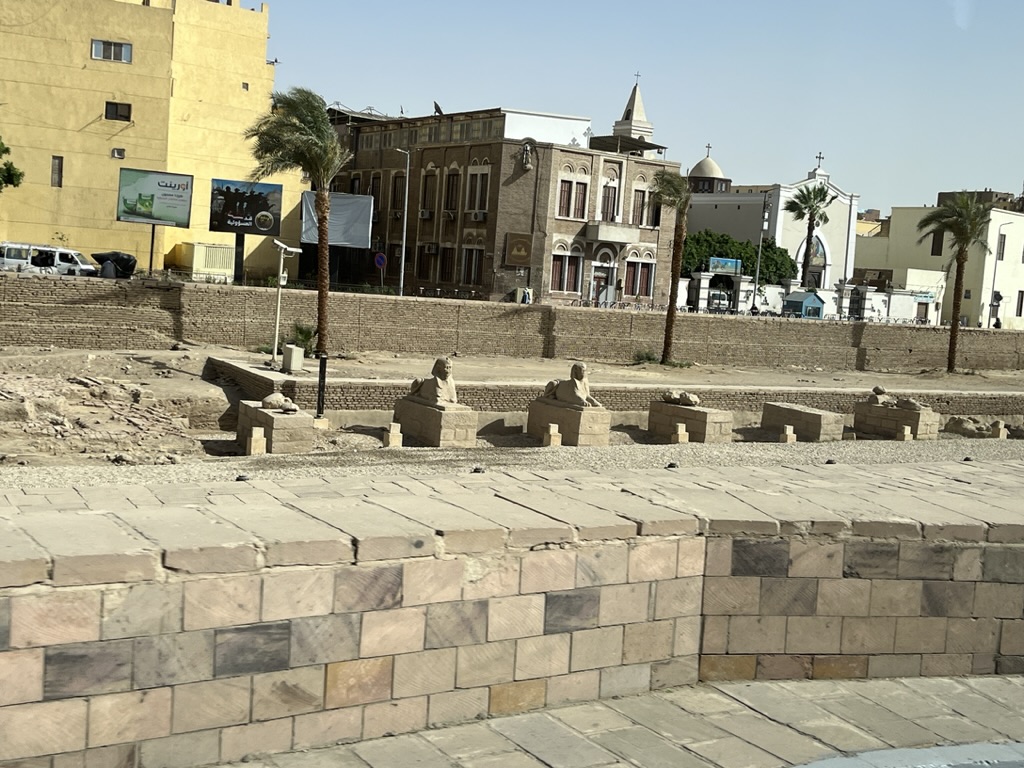
We spent about an hour and a half at the Karnak complex.
It’s the second largest religious complex in the world and we covered just a bit of it.
Having exhausted ourselves, if not the site, we made our way back to the bus and headed home.
The ride back to the ship was interesting for a couple of reasons – the Muslims are celebrating the month of Ramadan by fasting (not even drinking) from sunrise to sunset. Both Momo and our driver are devout Muslim (not sure about the guard – he didn’t say), so we got quite a bit of information about Ramadan over the course of the day.
As we were driving along thru a largely agricultural area in the evening we noticed a couple of things.
First, there were many fewer people around the villages. “They are all at home getting ready to break their fast at sunset.”
Second, about every mile or so along the road (generally at a crossroad) we began to see long tables being set for a big meal.
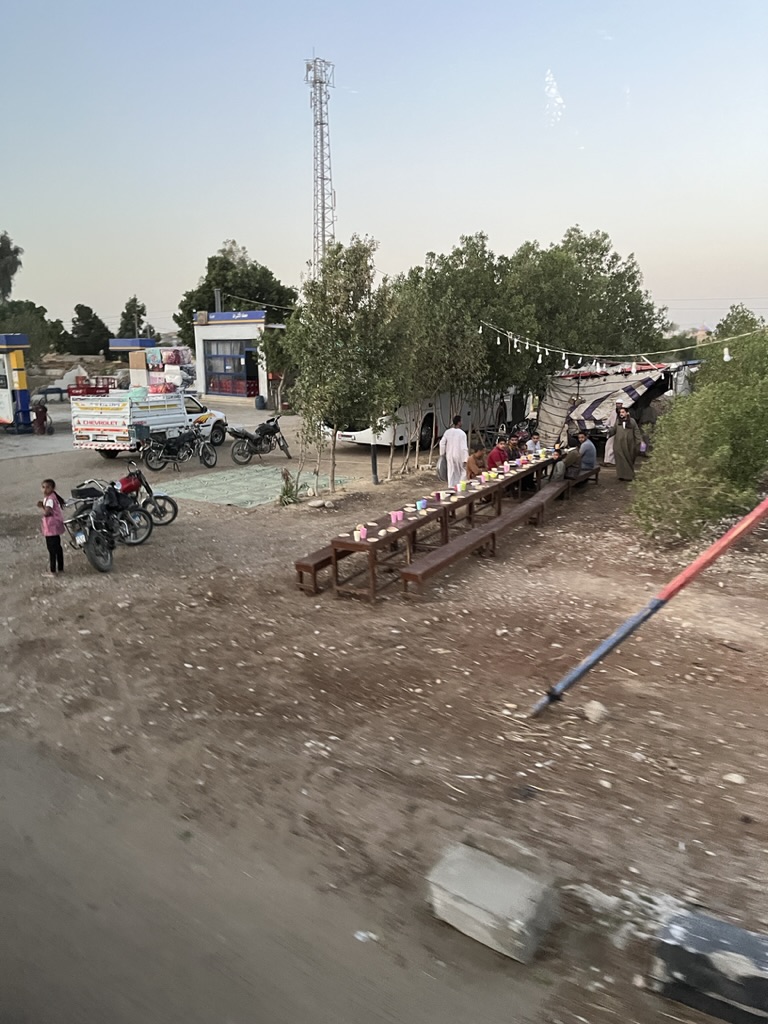
These are set in preparation for community breakfast – the celebration meal at sunset. All the food is donated (and Momo says the quality is much better than you would normally experience).
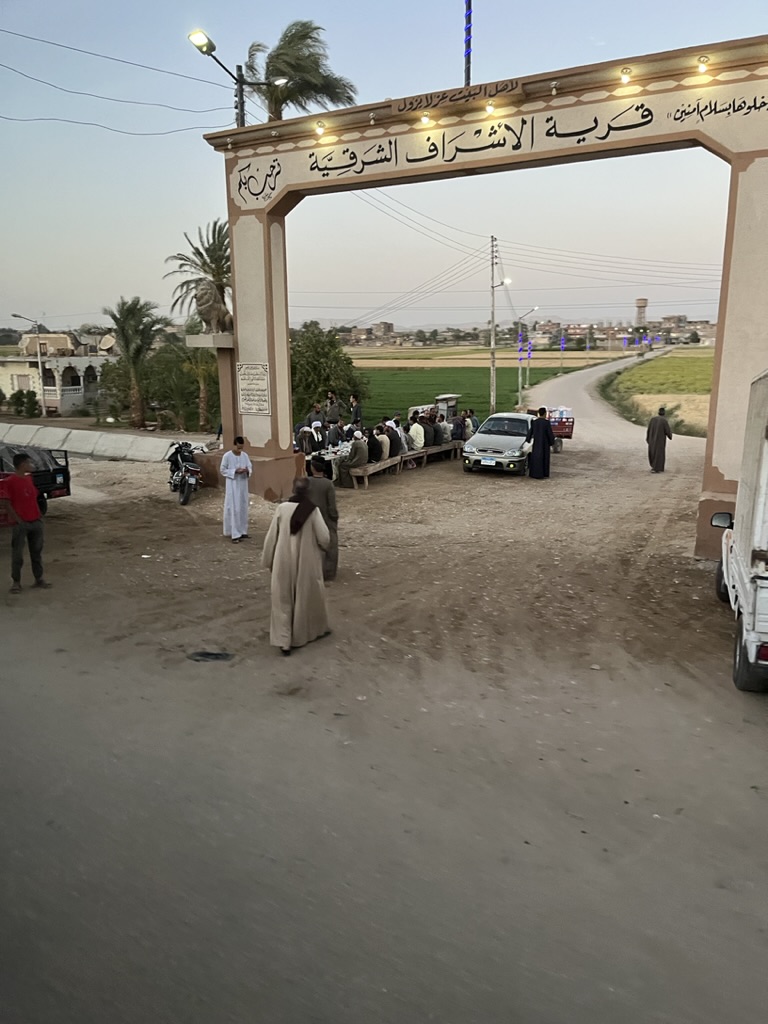
As the sun set the tables began to fill up with people. Momo pointed out that they will feed anyone and everyone at these meals – Muslim, Christian, Atheist, it doesn’t matter. All are welcome. As a matter of fact, at several such places our bus was stopped so they could invite us (all of us) to join them. We respectfully declined as we had to be back on board our ship by a certain time, but they sent us on our way with a gift (usually water and dates). What a great way to celebrate community!
Egypt is an ancient land. Farms have stayed in families for dozens of generations. People work the land in much the same way as their ancestors. Change is slow, but it’s always there.
The typical one-story mud brick house is giving way to multiple-story block and concrete homes (the Arab families like to live together so when each son gets married they build another level on top of the house).

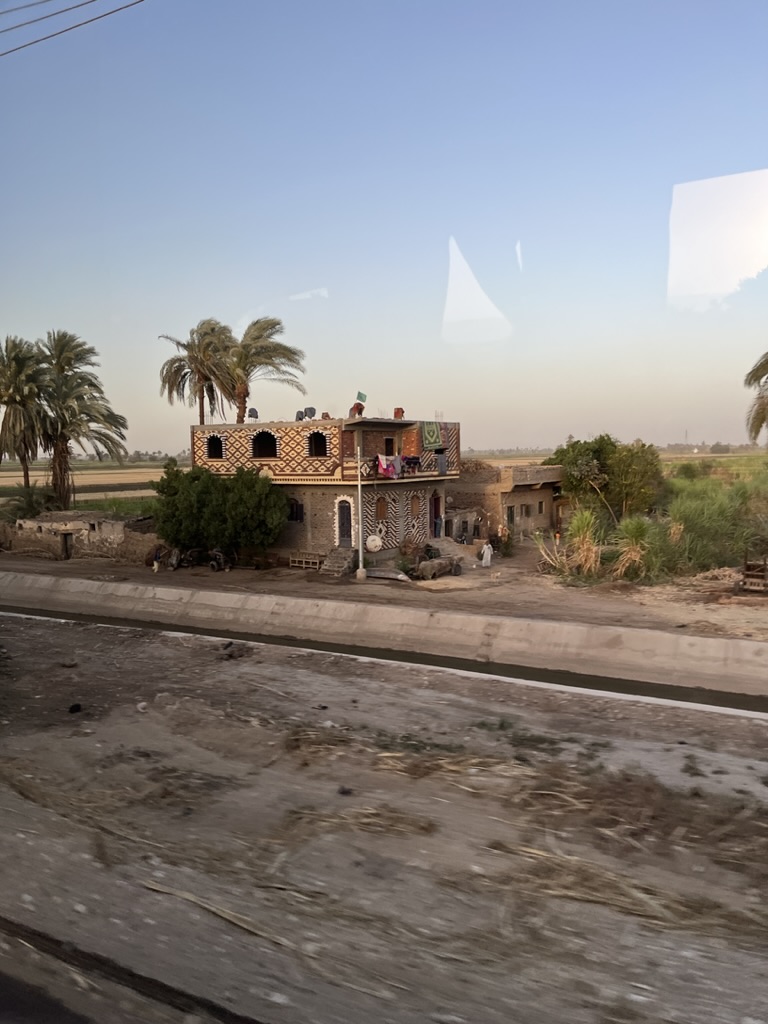
2-wheel donkey carts are being replaced by 3-wheel motor carts
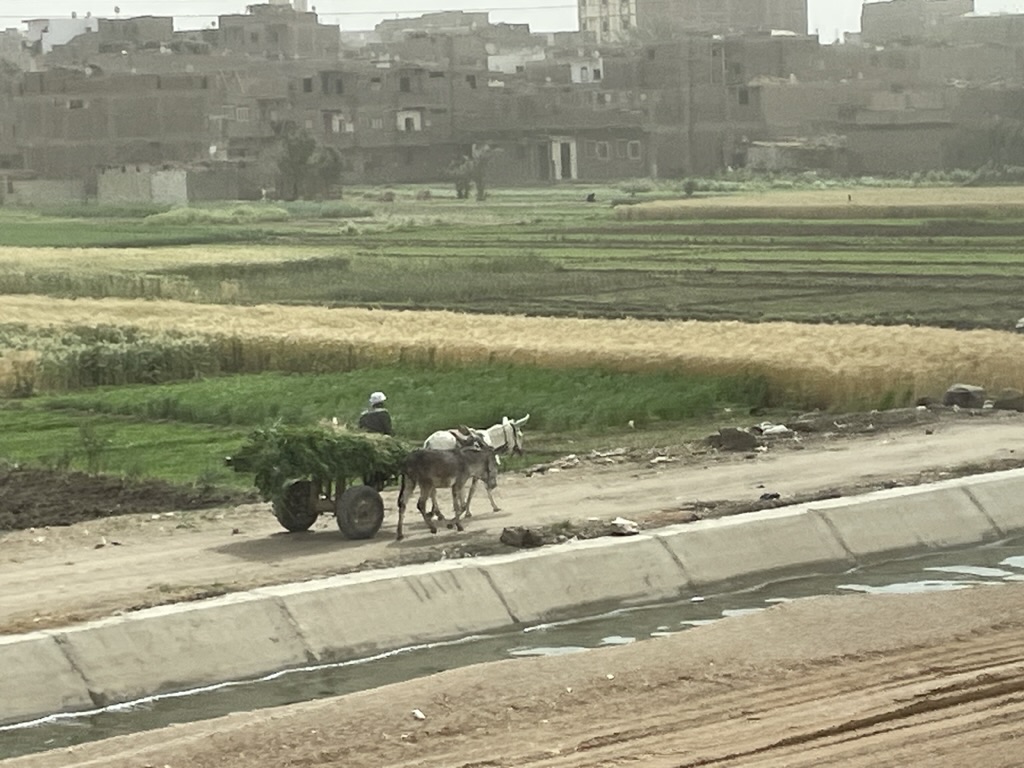
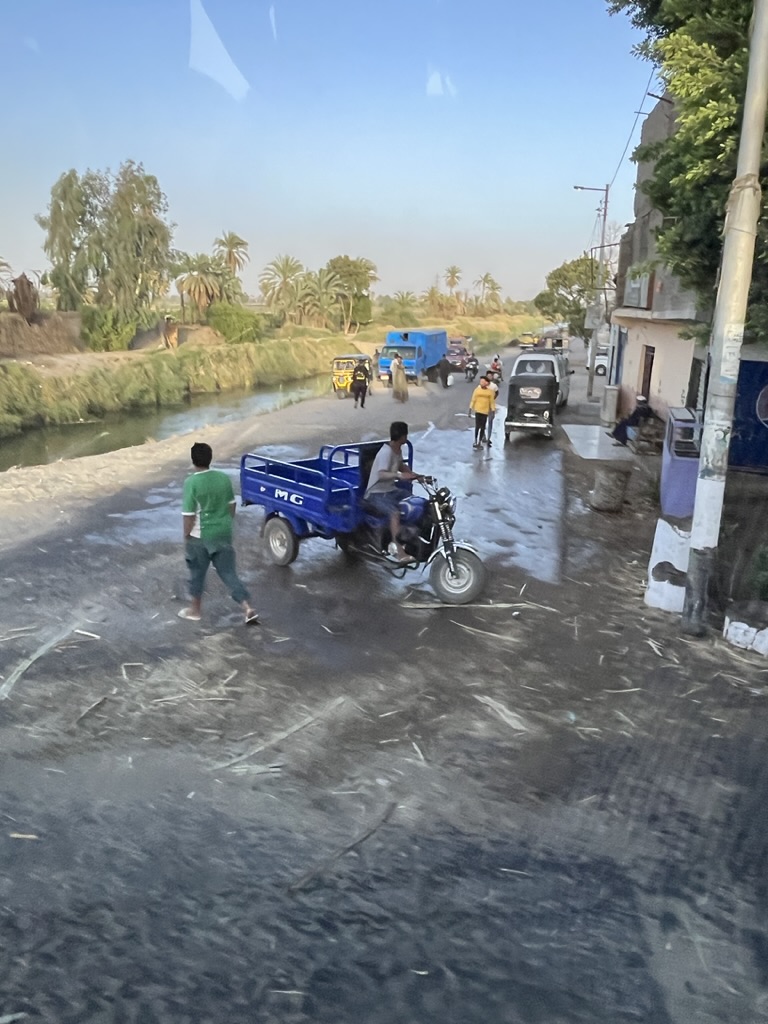
But the pace of life, and the communal nature of the villages remain.
It’s been a great experience to marvel at both the ancient life and traditions that mark this amazing land.
Now we sleep,
R
Cheryl’s Factoids:
- The pyramids are from very early in the Egyptian period. Since robbers kept breaking into their pyramids the pharaohs decided to build their tombs in the side of a valley and place guards to keep the grave robbers out. The perfect place was found – a mountain shaped like a pyramid! Unfortunately the guards needed money too, so they would tell the robbers where the tombs were.
- The Valley of the Kings was rediscovered by Westerners back to the eighteenth century. The archeologists, who conducted the expeditions under Napoleon Bonaparte, were the first to outline maps for the tombs. Searches are still ongoing in the Valley of the Kings and Valley of the Queens since as recently as 2019 an embalming site was discovered. On Jan 14, 2023, Egypt’s Tourism Ministry announced the discovery of another royal tomb discovered by a joint Egyptian-British team!
- From ancient times the Egyptians dug canals radiating out from the Nile River to irrigate their fields. Now farmers use a mechanical pump to get the water out of the canal into their irrigation ditches but irrigation farming from the time of Mesopotamia, was accomplished by using a hand operated “shaduf”, which consists of a long, tapering, nearly horizontal pole mounted like a seesaw with a large skin or pot on the end to dip up the water to be emptied into the irrigation channel. They built gates into the canals to control the flow of the water (the off branching channels to the villages looked rather blocked with rubbish) and built reservoirs to hold water supplies in case of drought.
- The Karnak Temple and the Luxor Temple are both located in the city of Luxor (previously known as Thebes). The Avenue of Sphinxes ran straight for about 1.7 miles between the Luxor Temple and the Karnak Temple complex and was lined with human-headed sphinxes and is still being uncovered. From the Middle Ages onward, the people of Luxor had settled in and around the temples – so centuries of rubble and debris had buried most of the temples and colonnades. Excavators had to compensate the current property owners and remove their houses, rubbish, huts, barracks, and pigeon towers before excavation could even start.
- Karnak Temple construction started around 4,000 years ago and continued until the Romans took over Egypt about 2000 BC. This was built as a trinity cult temple dedicated to Amun, Mut, and Khonsu. Each ram-headed sphinx holds a standing statue of the pharaoh between its forelegs (originally Ramses II, 1279-1213 BC). Each succeeding pharaoh added his own touches to the Karnak Temple.
- The TRINITY – Amun was the god of Air/father god, Mut was the primordial mother goddess/water, and Khonsu, their son, was the god of the Moon (along with the god Thoth, he marked the passage of time). Khonsu, now known as “The Moon Knight” in the Marvel comics, was also mentioned in the 2nd “Night at the Museum” movie as the moon’s light on the tablet is what gives life to the creatures at night.
Randy’s additional note: About Momo. Our first hint was on our morning bus ride. He was talking about the Rosetta Stone and grabbed a pad of paper and a marker and started drawing hieroglyphs, explaining their development and how they were eventually decoded. That’s the level of expertise he brought to the whole day. Much later he did admit to having a Master’s degree in Egyptology, “But I learn so much more as a guide, talking with people, finding answers to their questions, finding new things about this land every day.” Score one more for Memphis Tours. Thank you for finding Momo and for sharing him with us.
